Day 79 - Hachimen Mountain In Nakatsu, and How My Wish For A Taki-Gyo Practice Was Granted, The Kyushu 108 Temple Pilgrimage, Japan
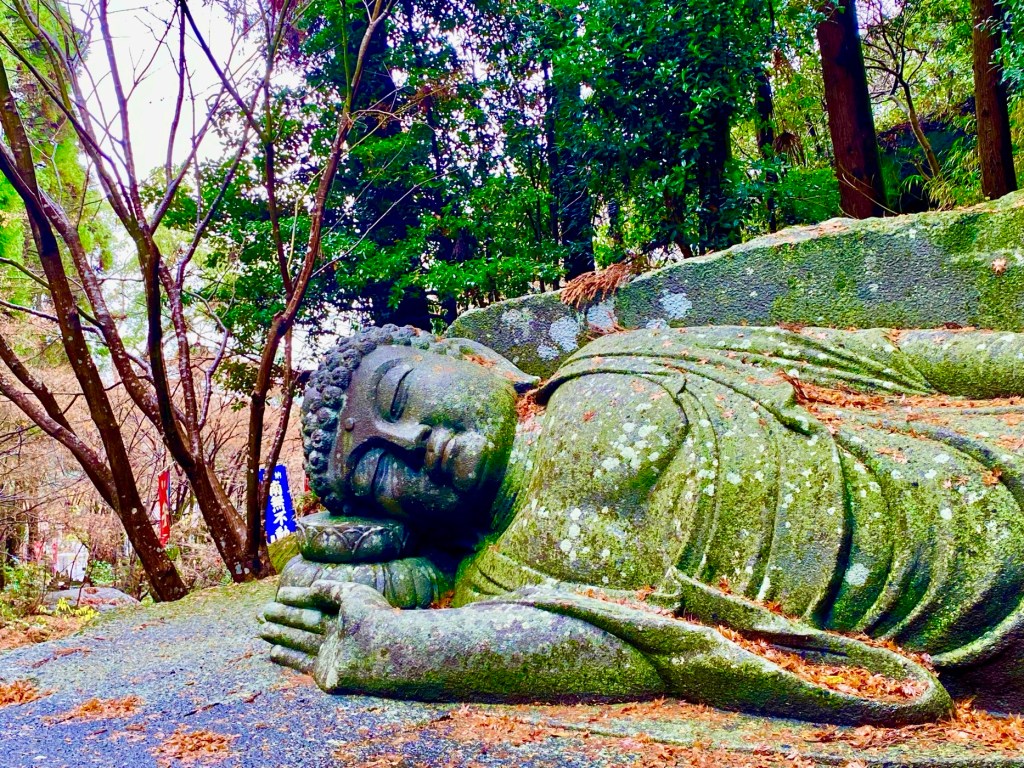
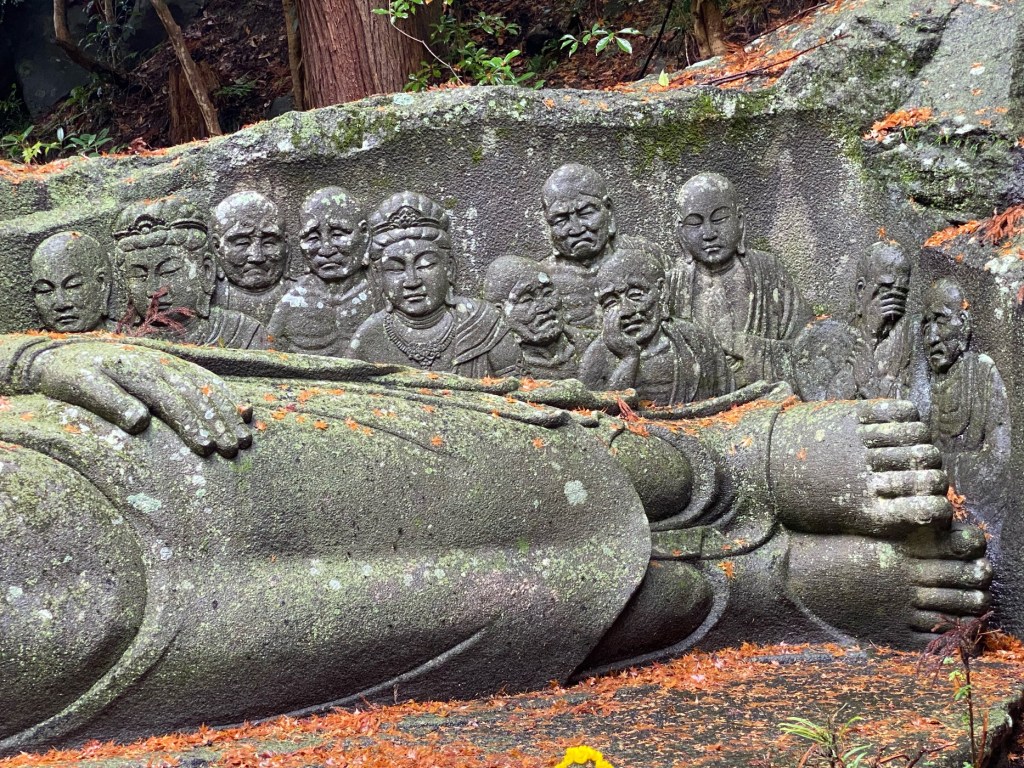
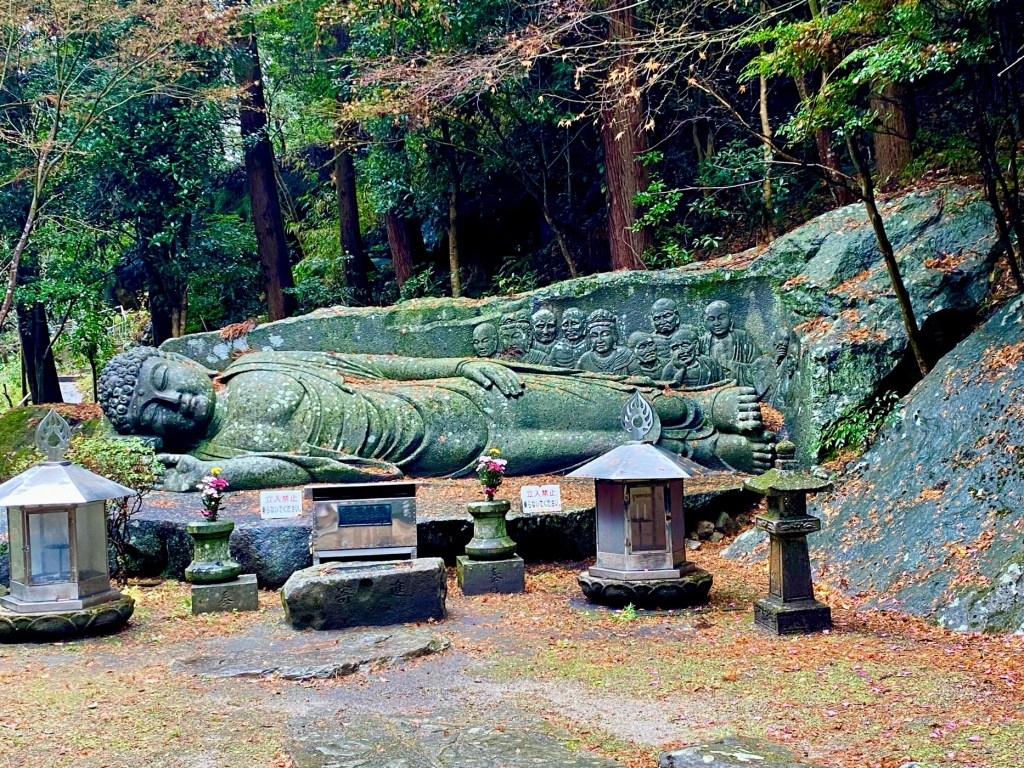
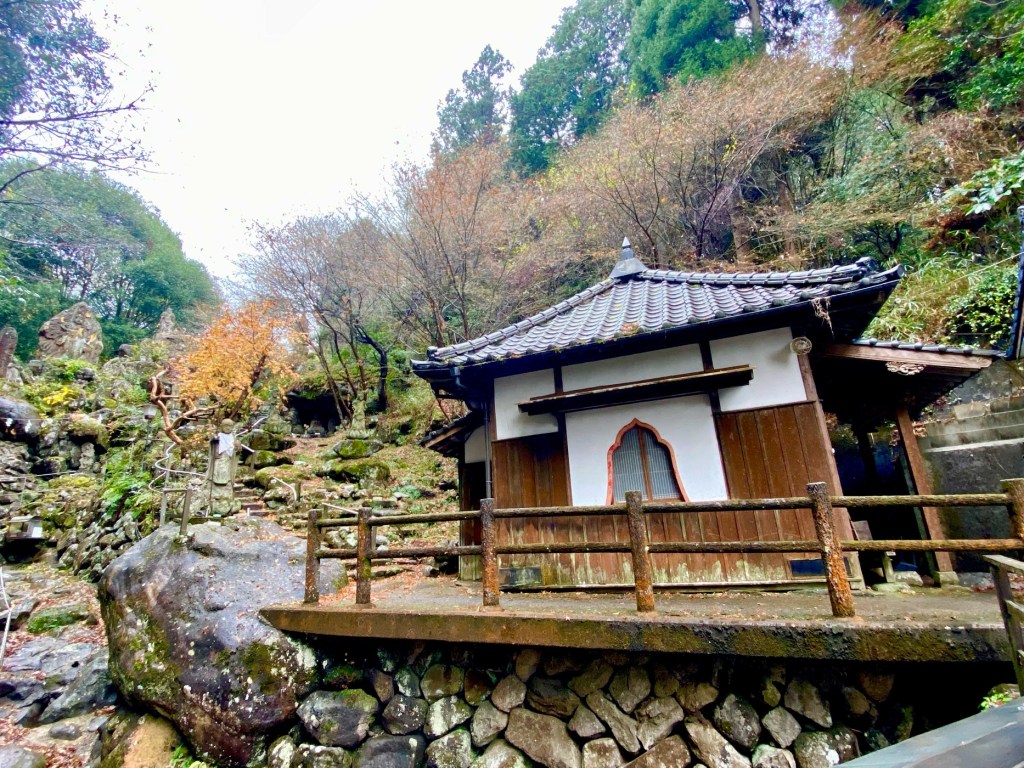
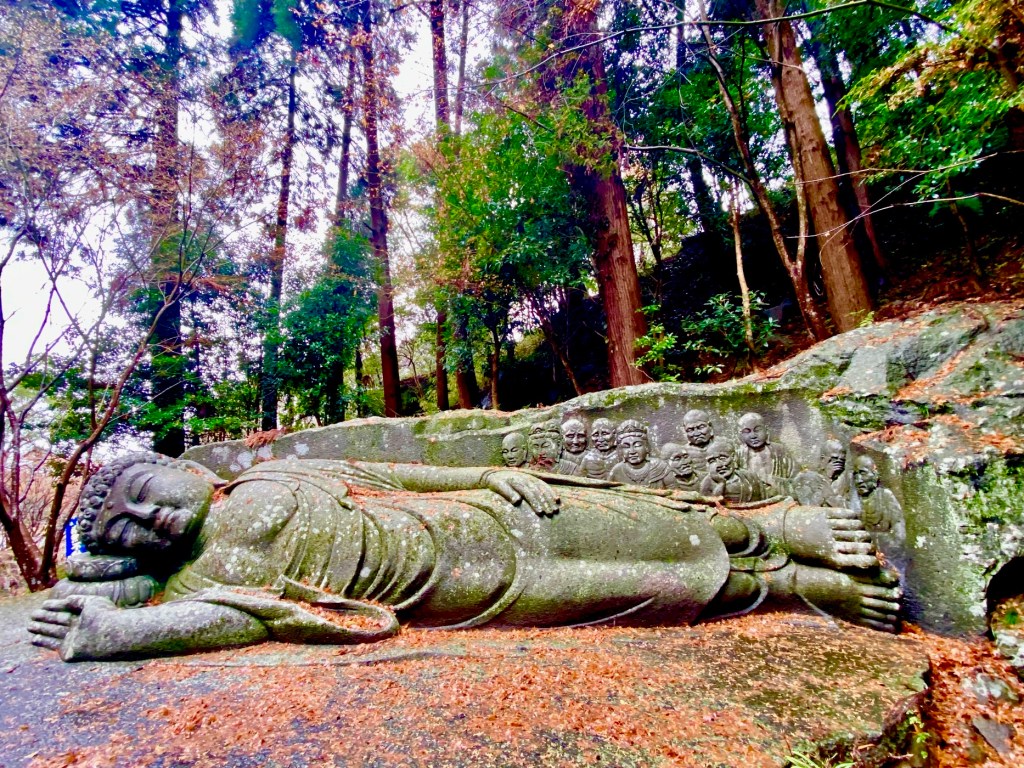
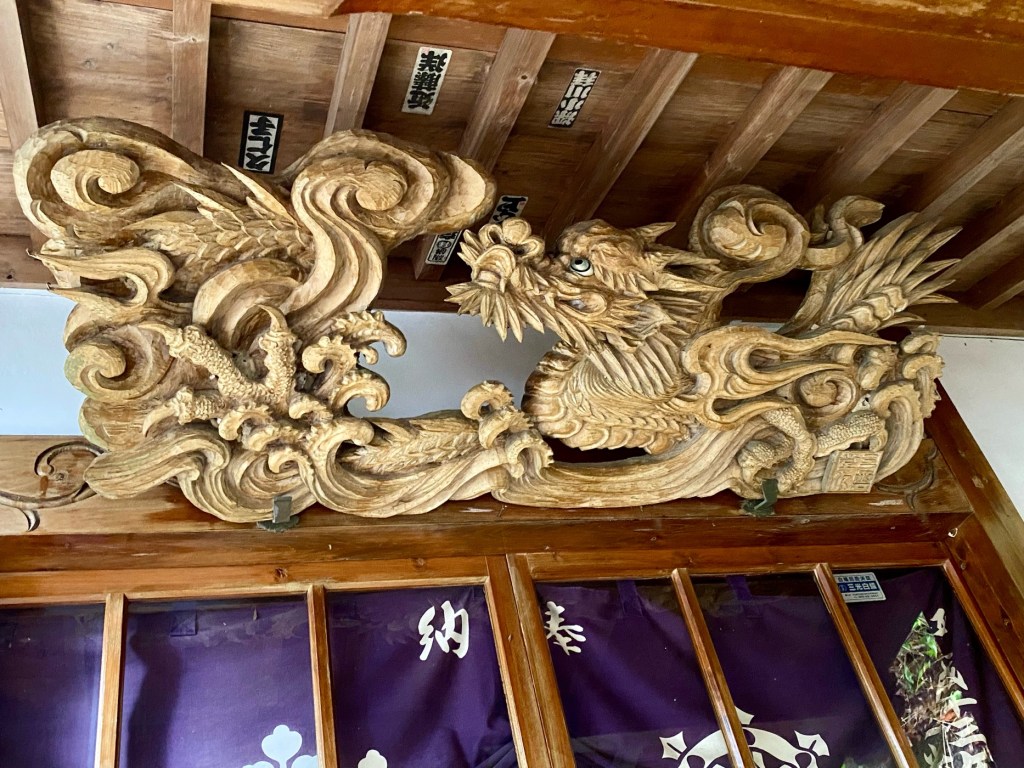
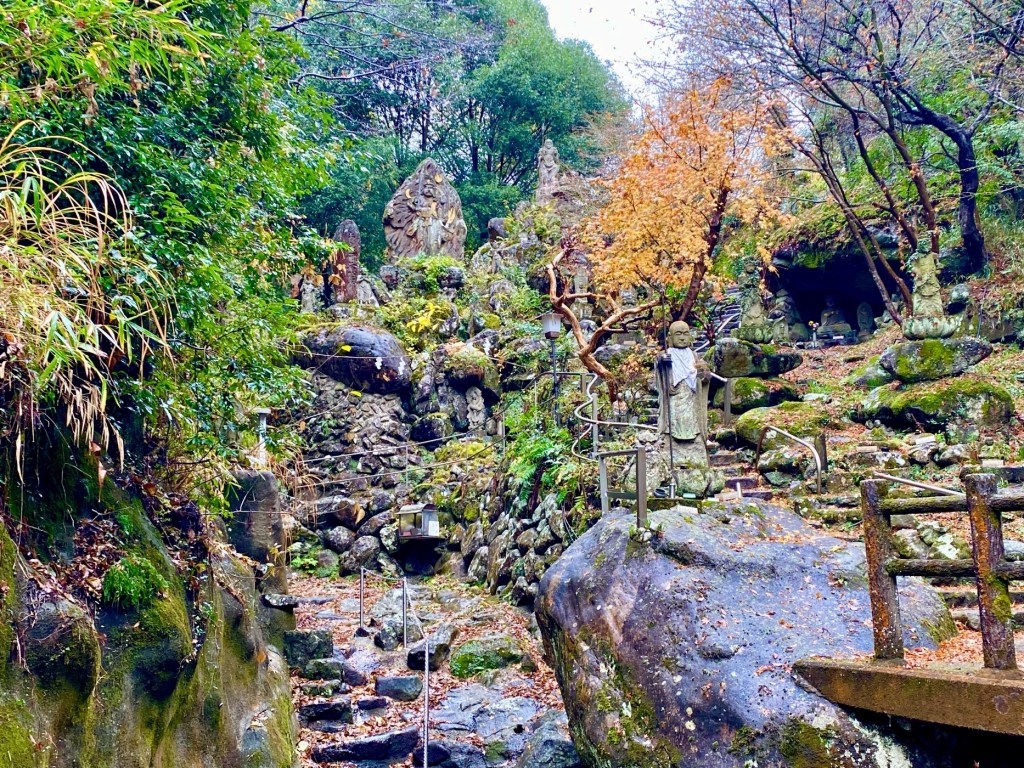
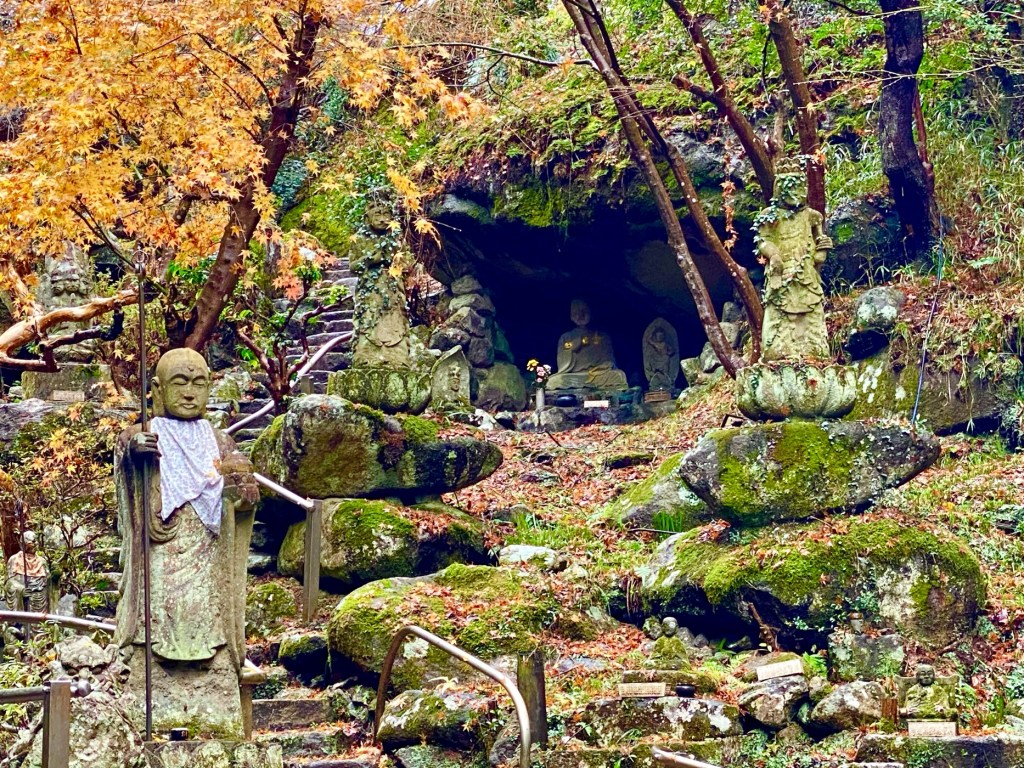


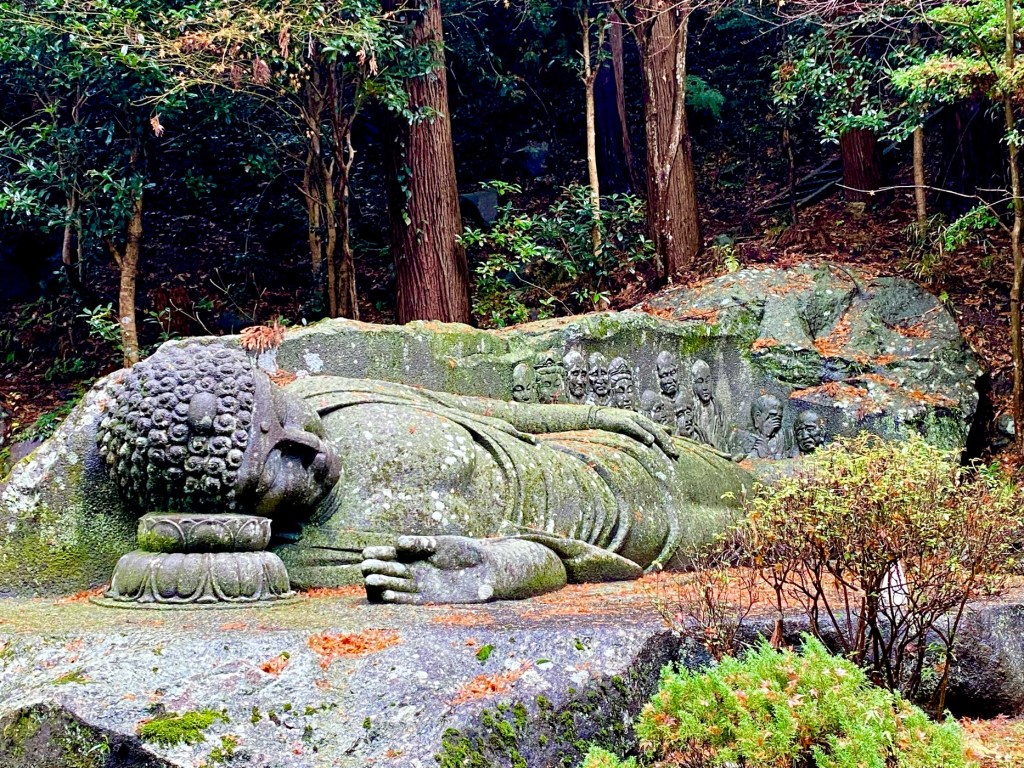
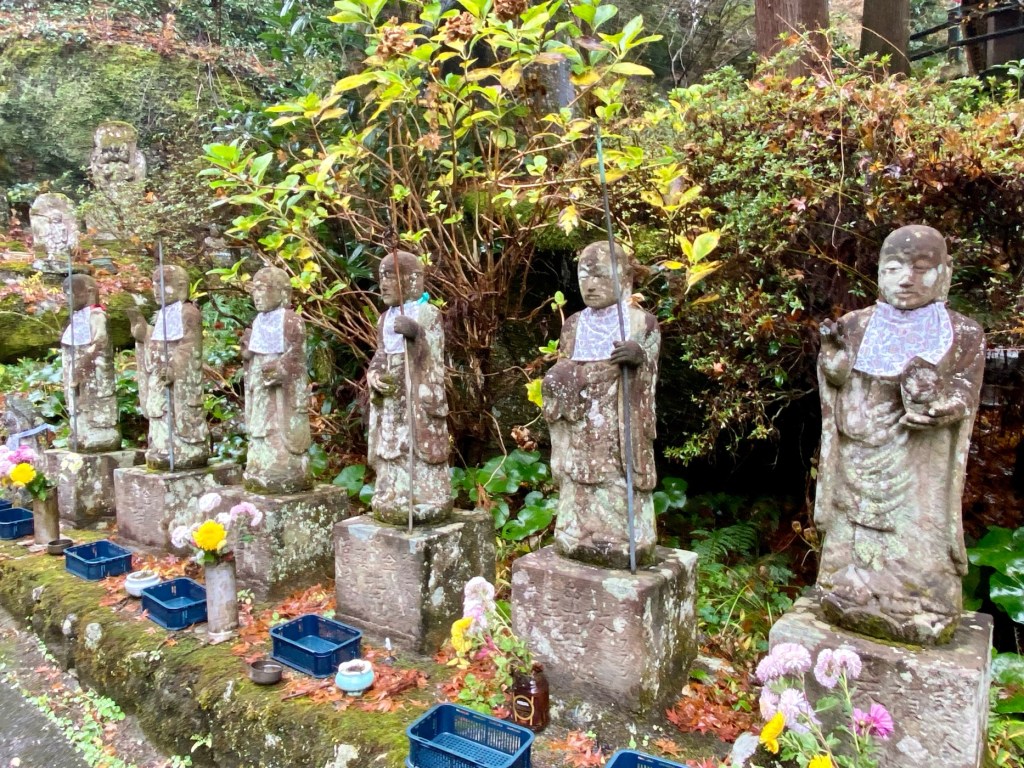
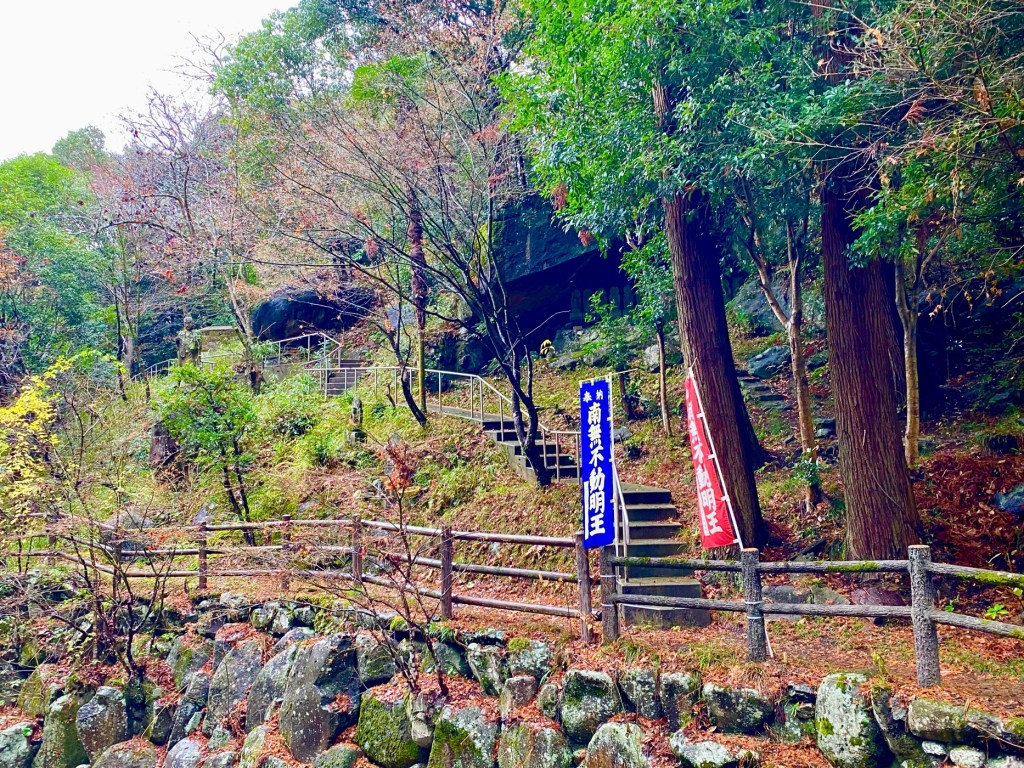
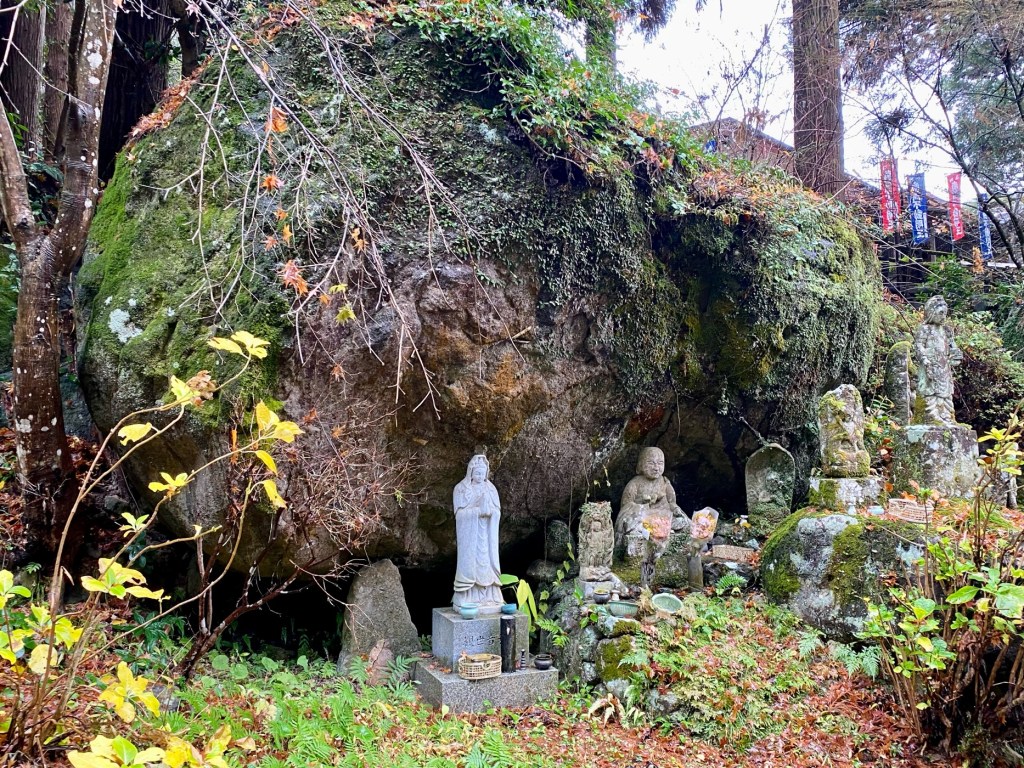
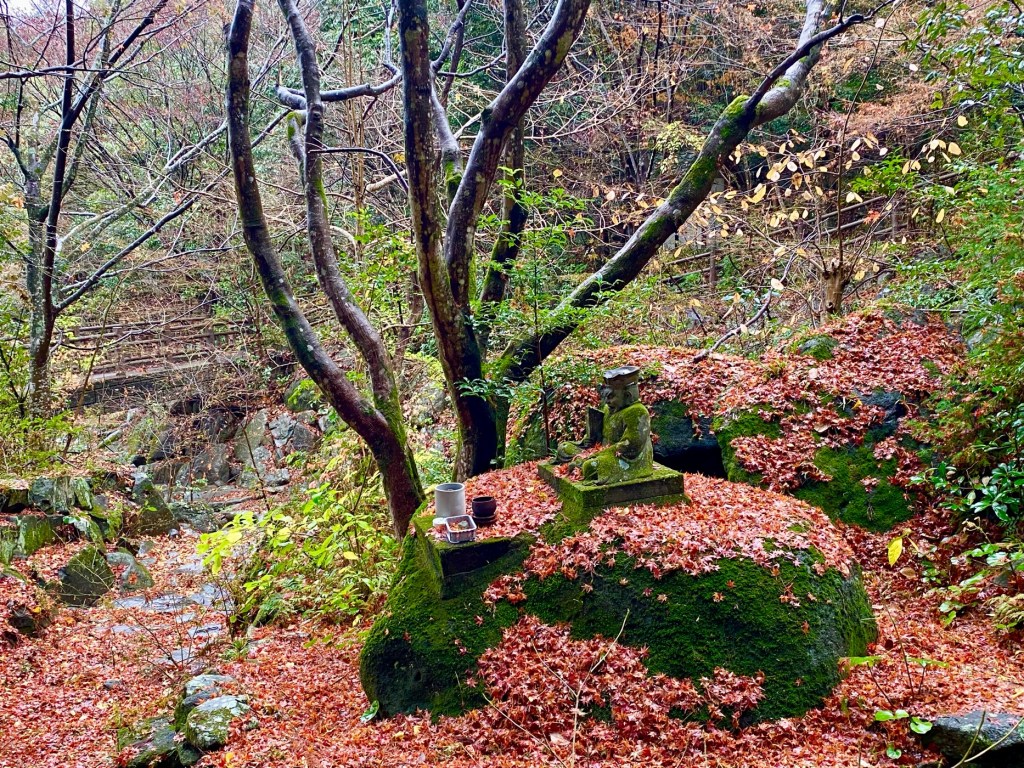
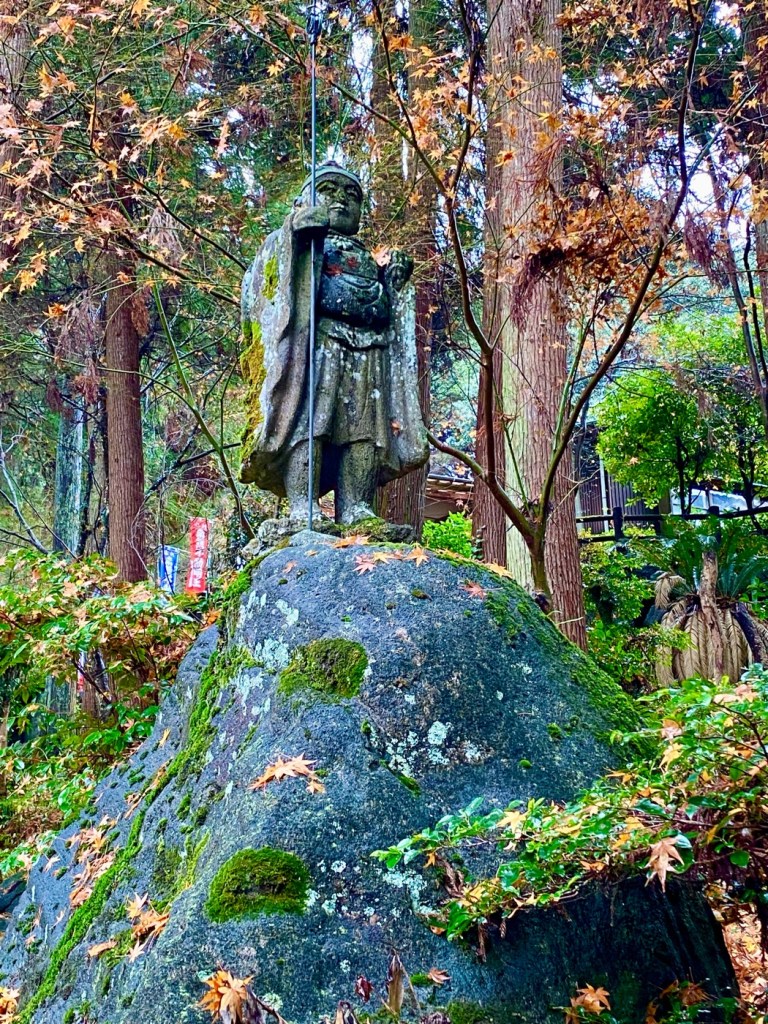
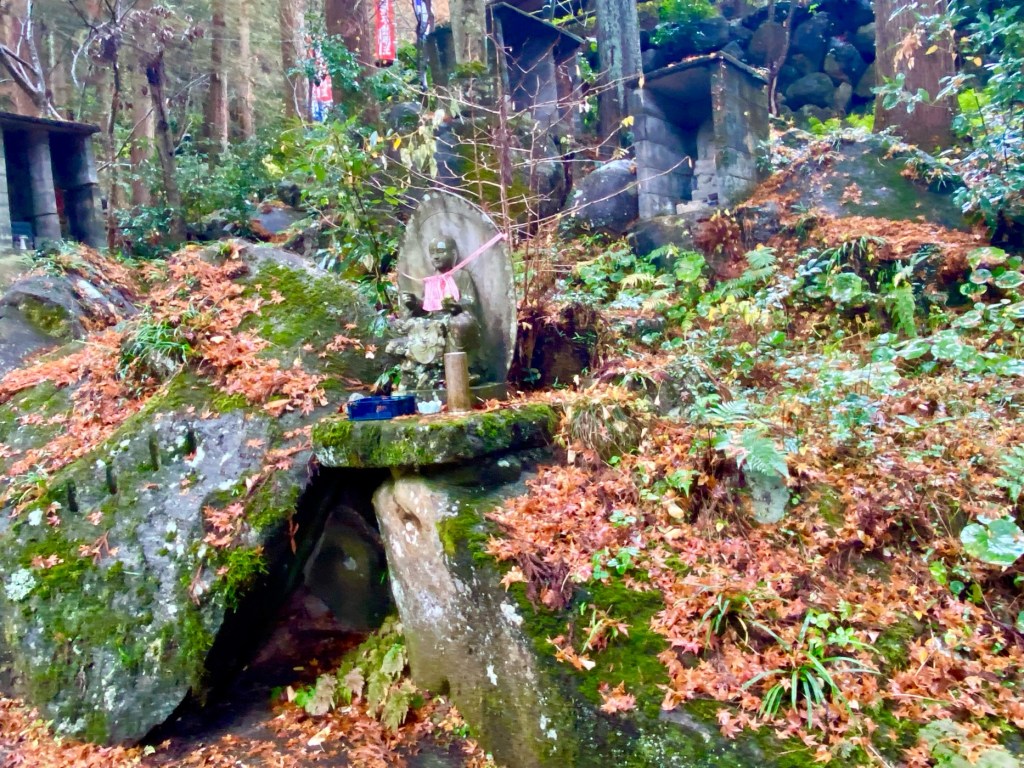
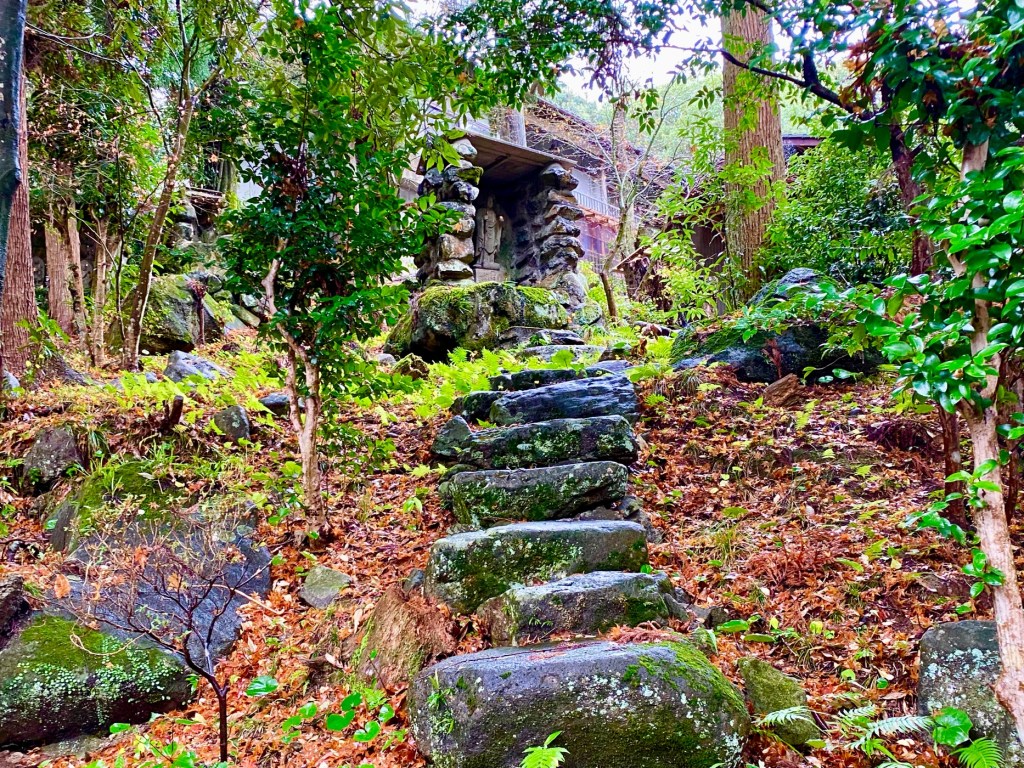
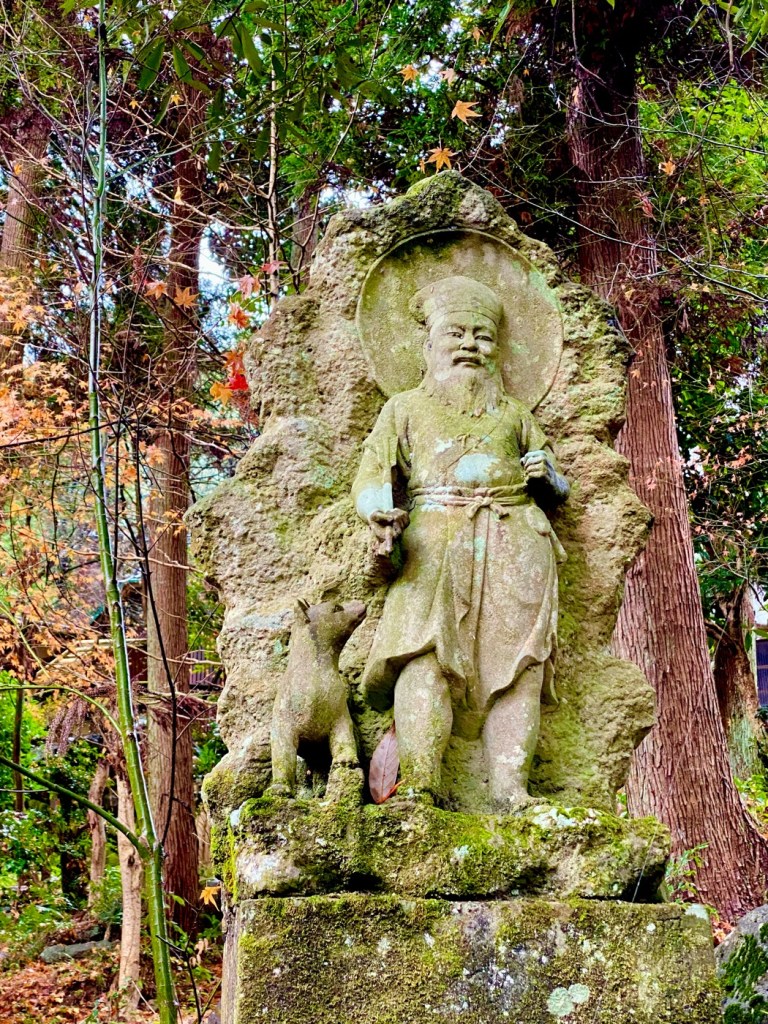
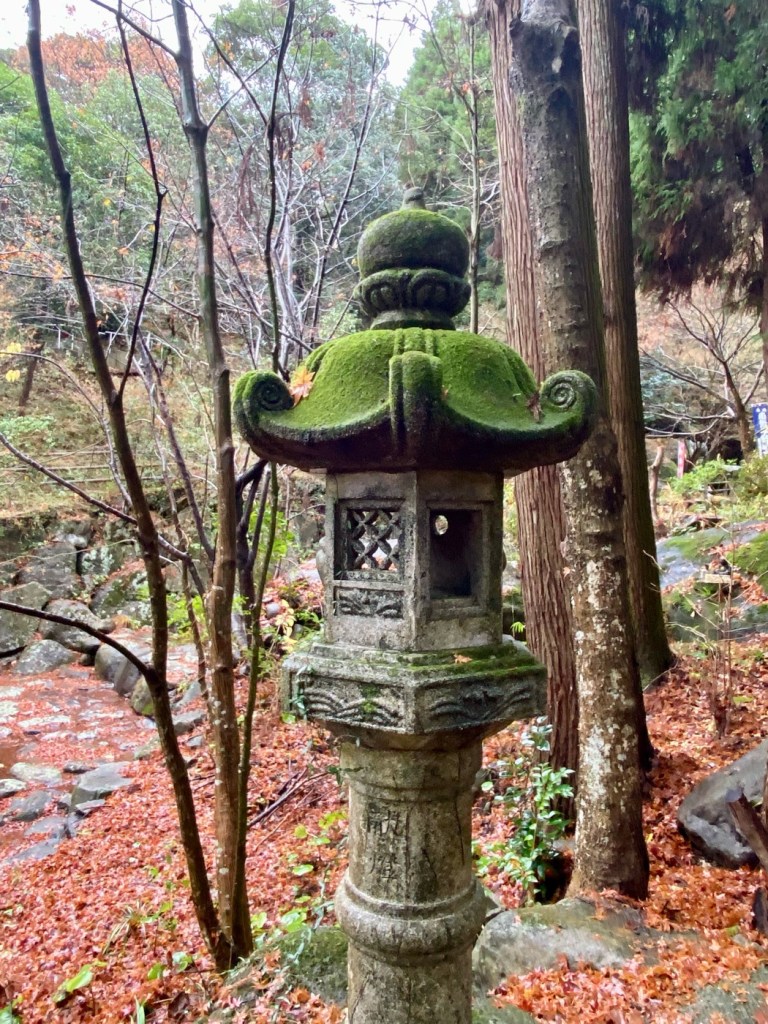
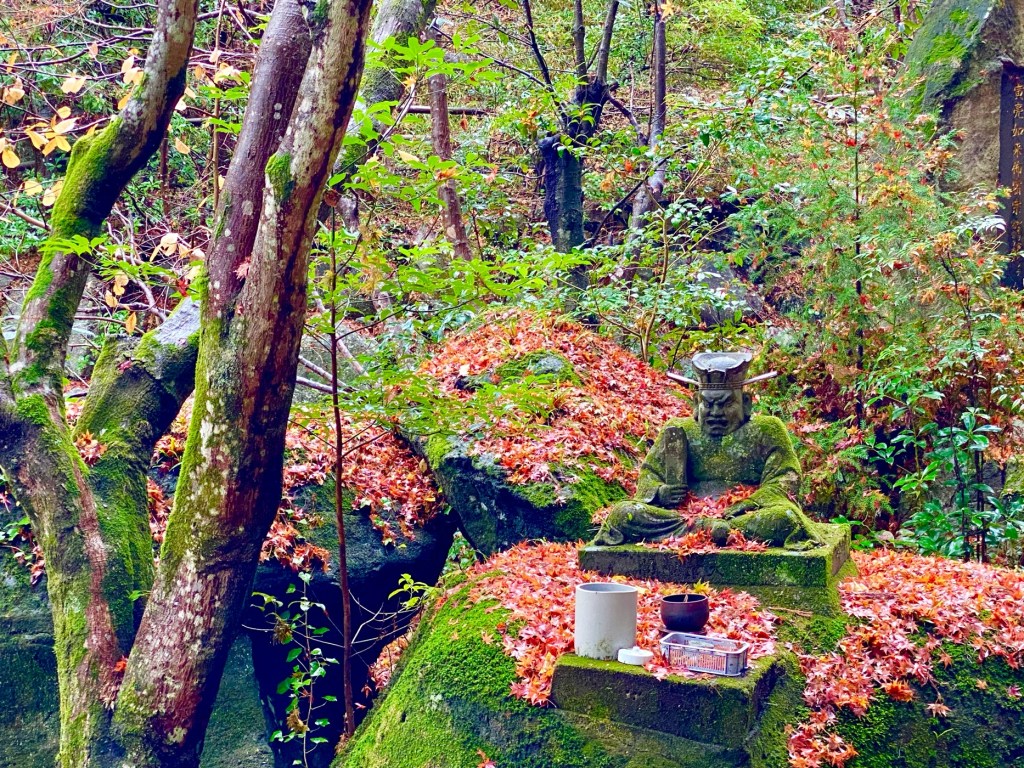
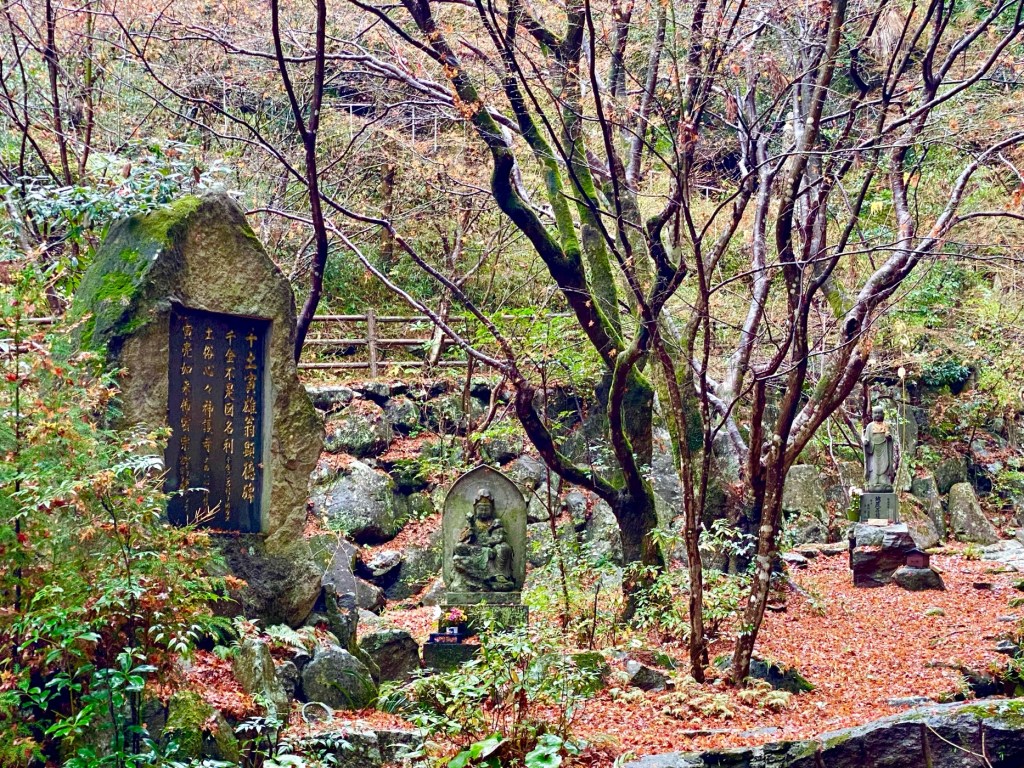
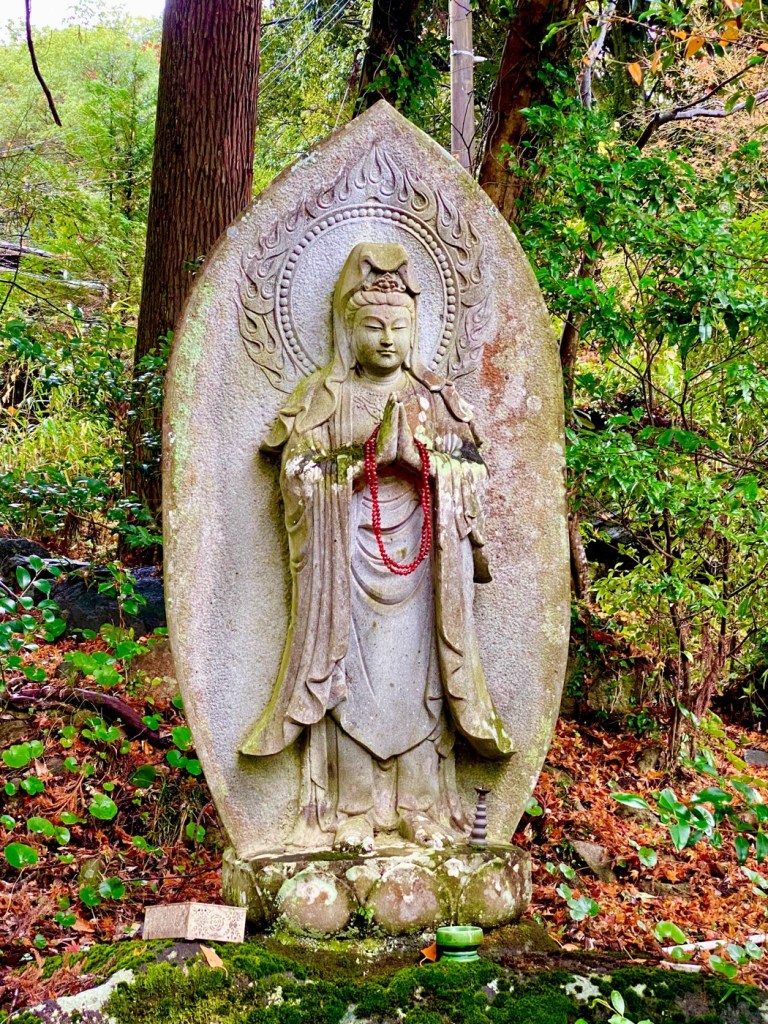

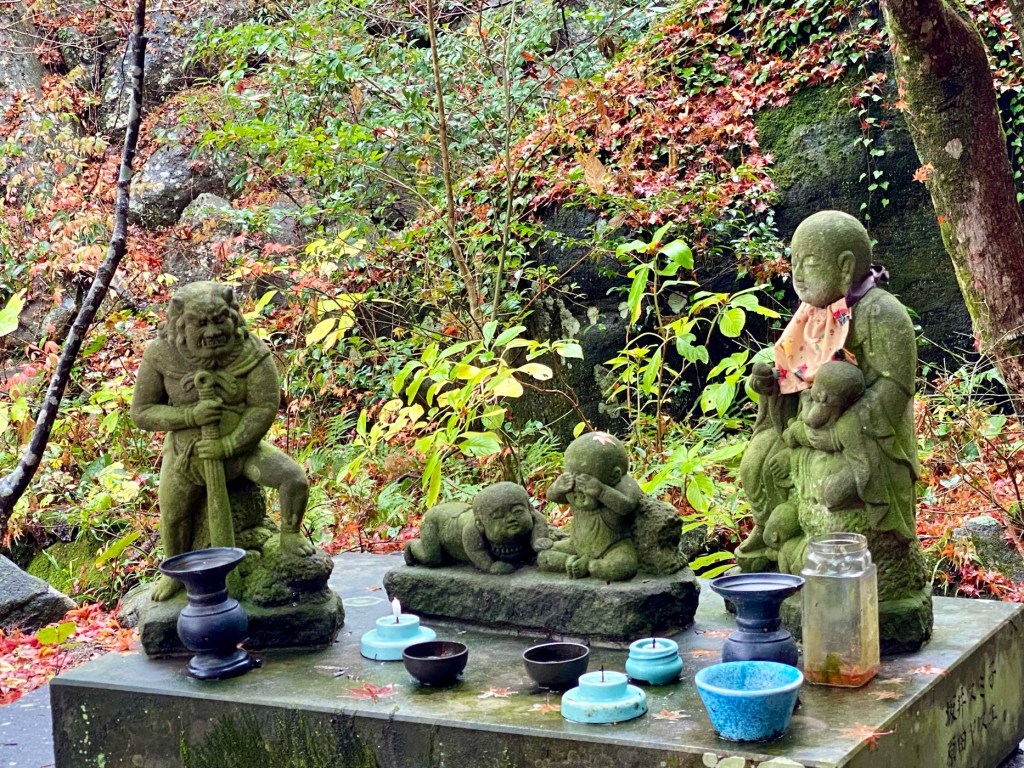
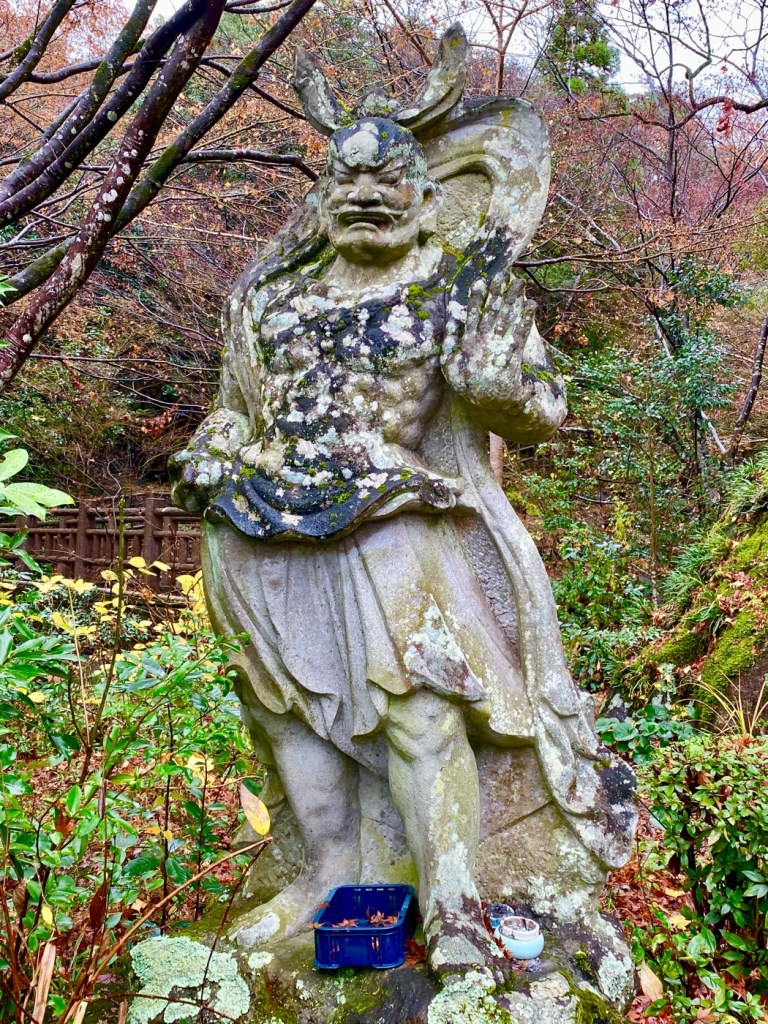

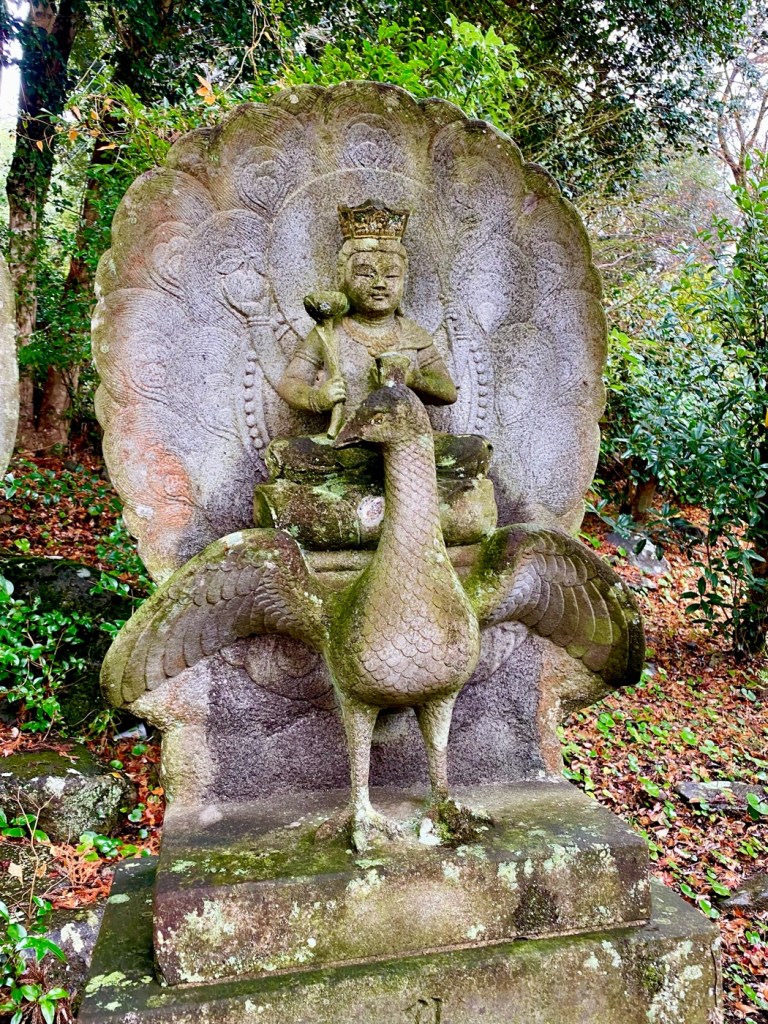
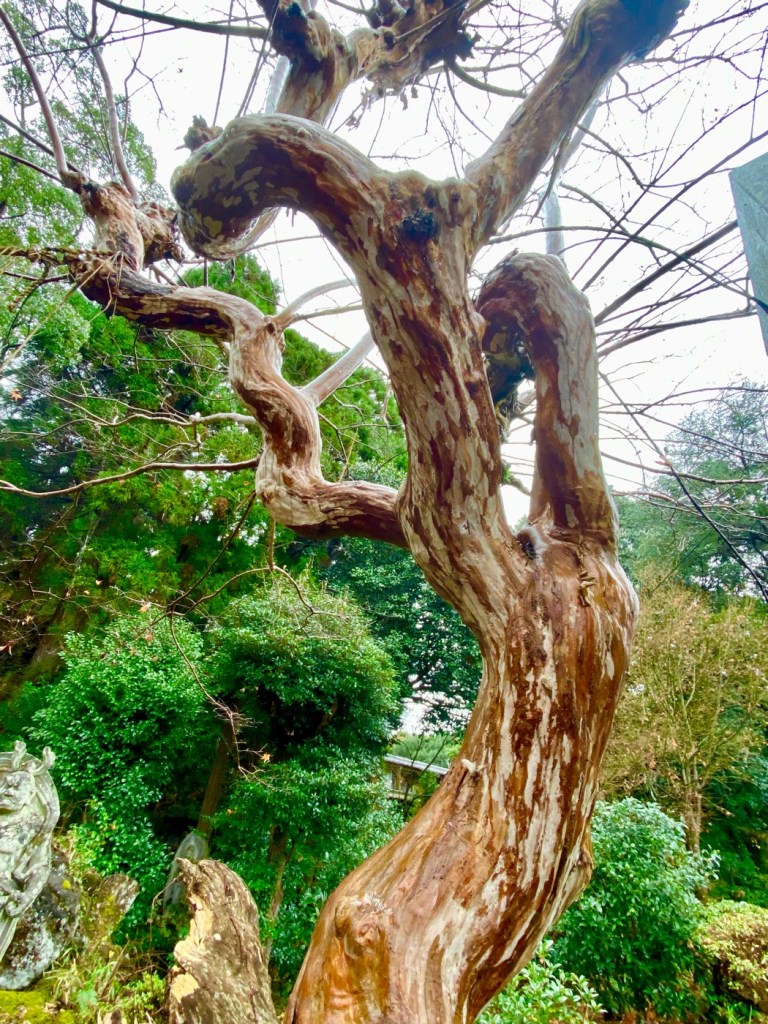
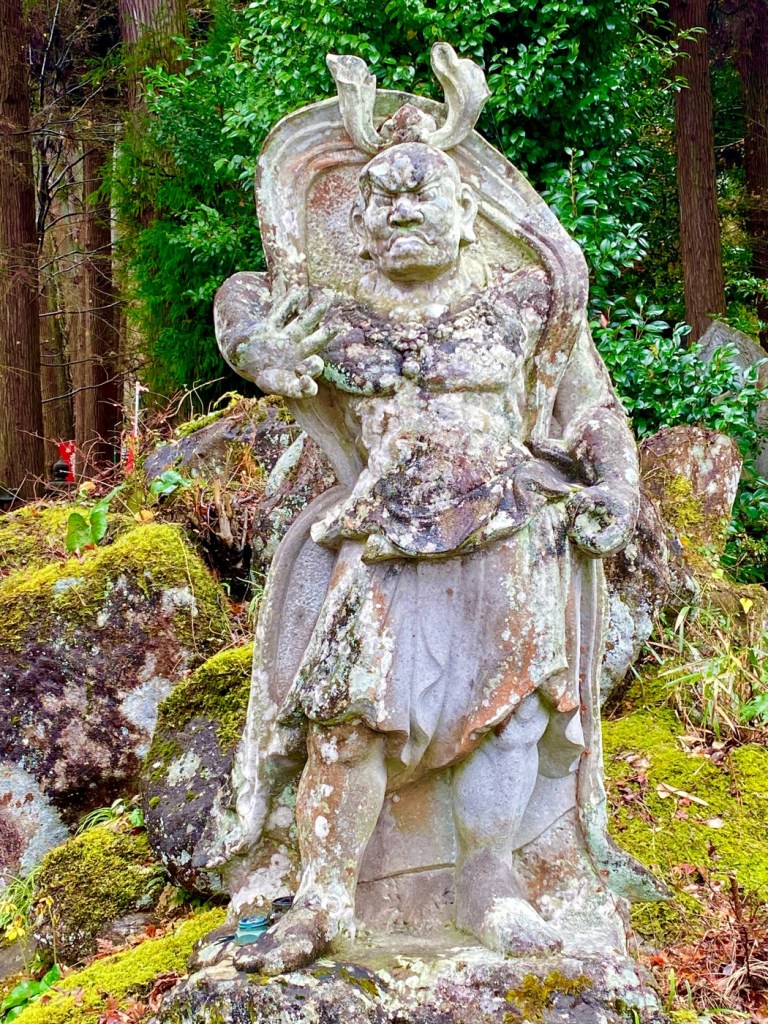
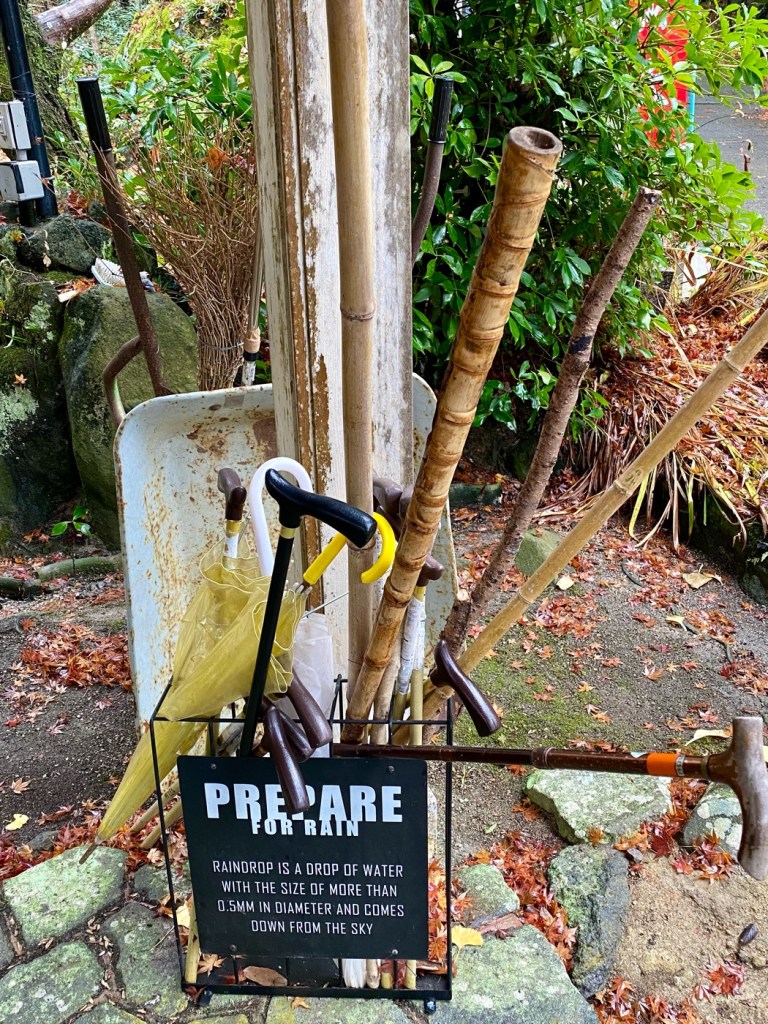

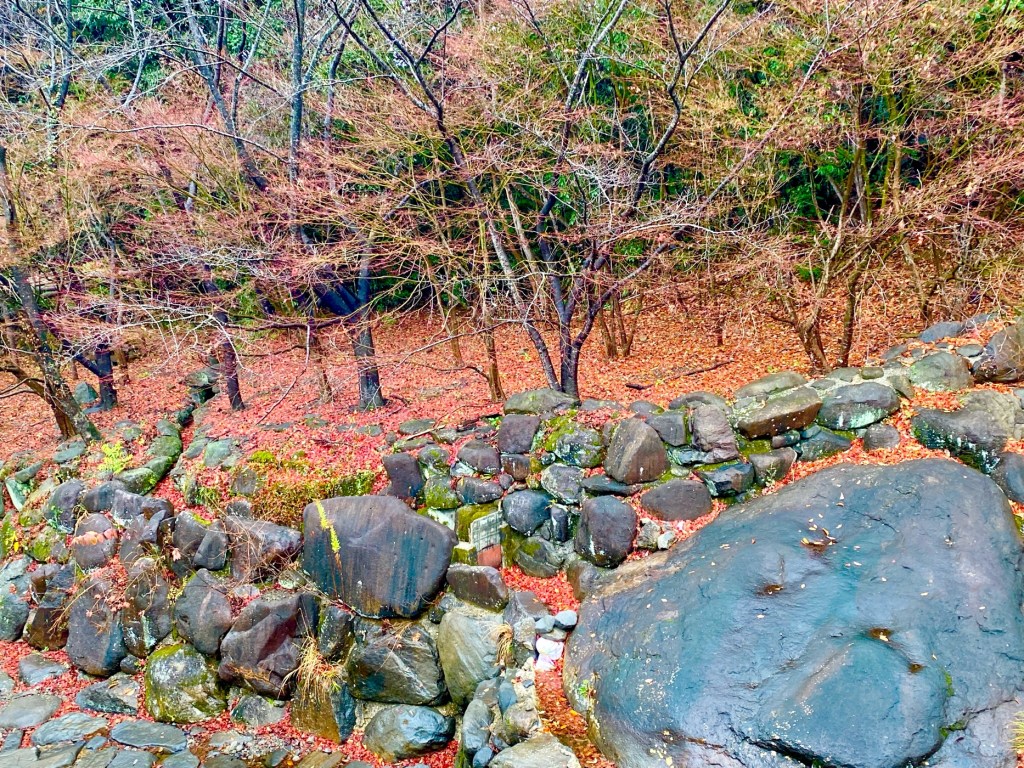
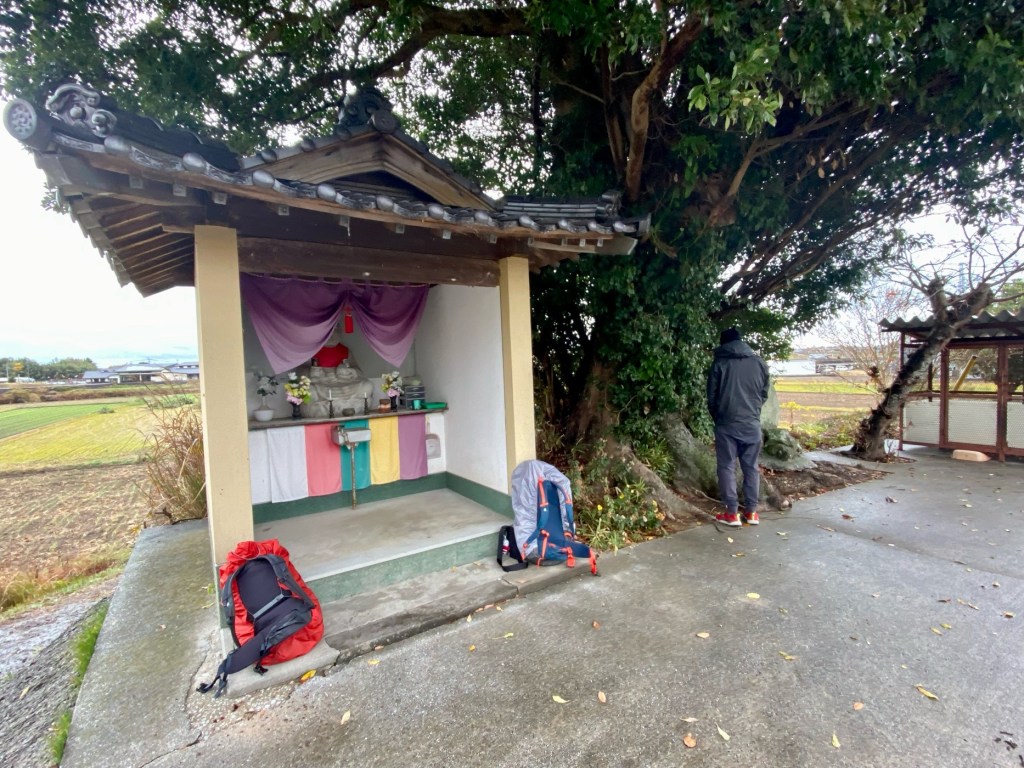
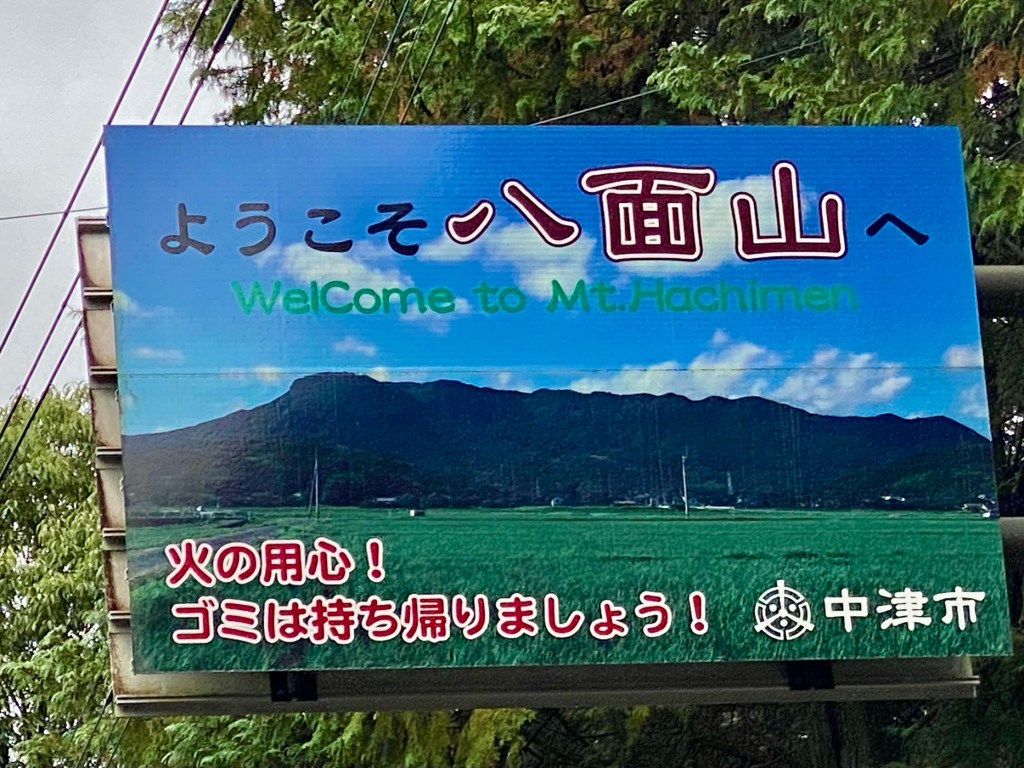
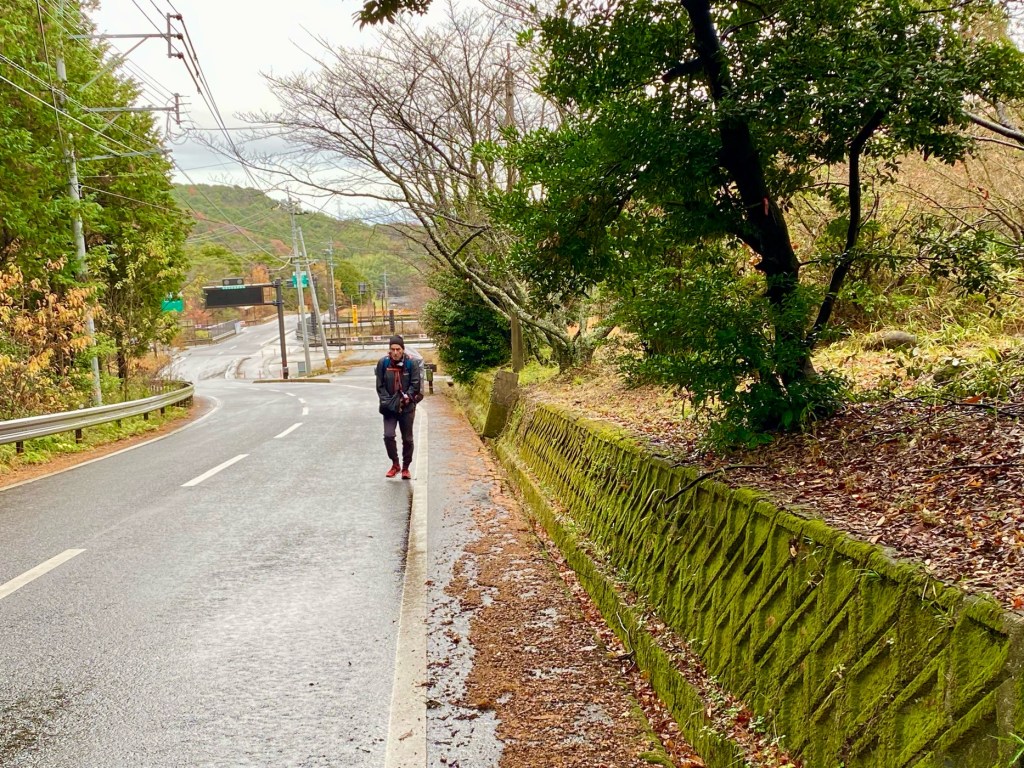

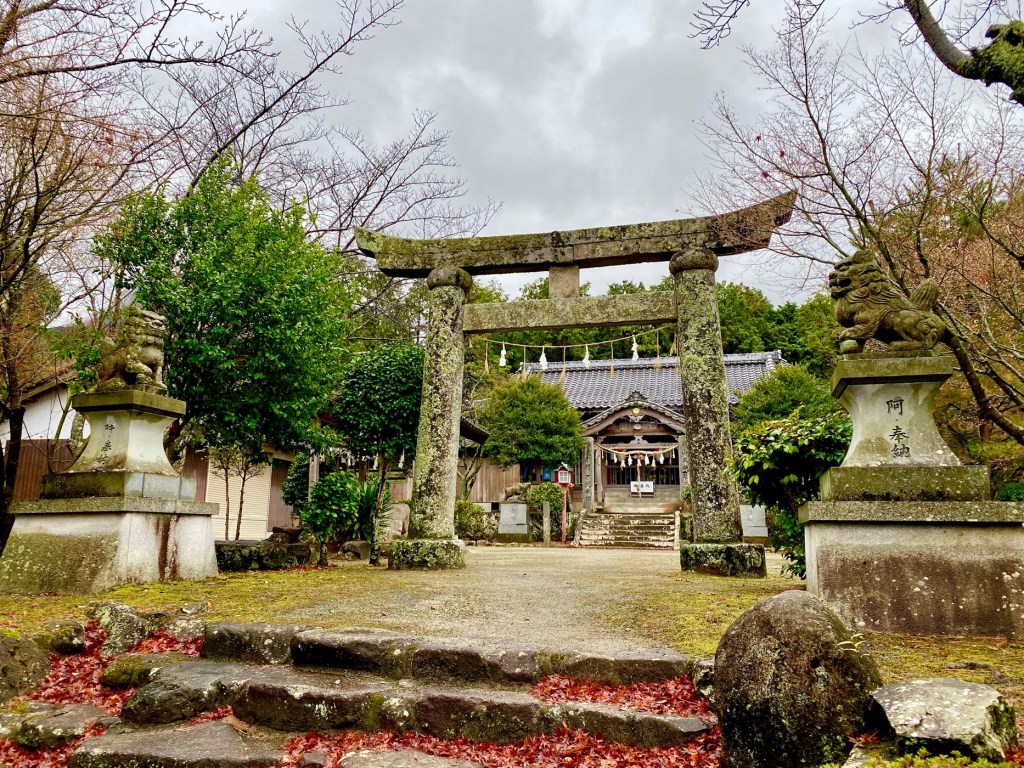
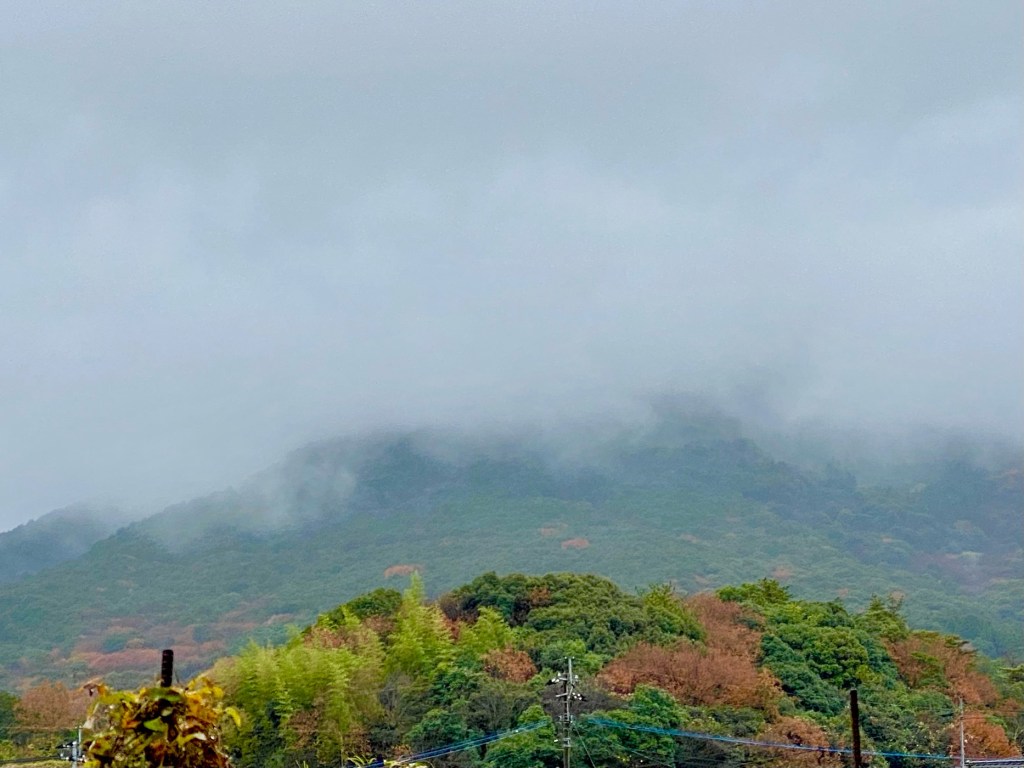
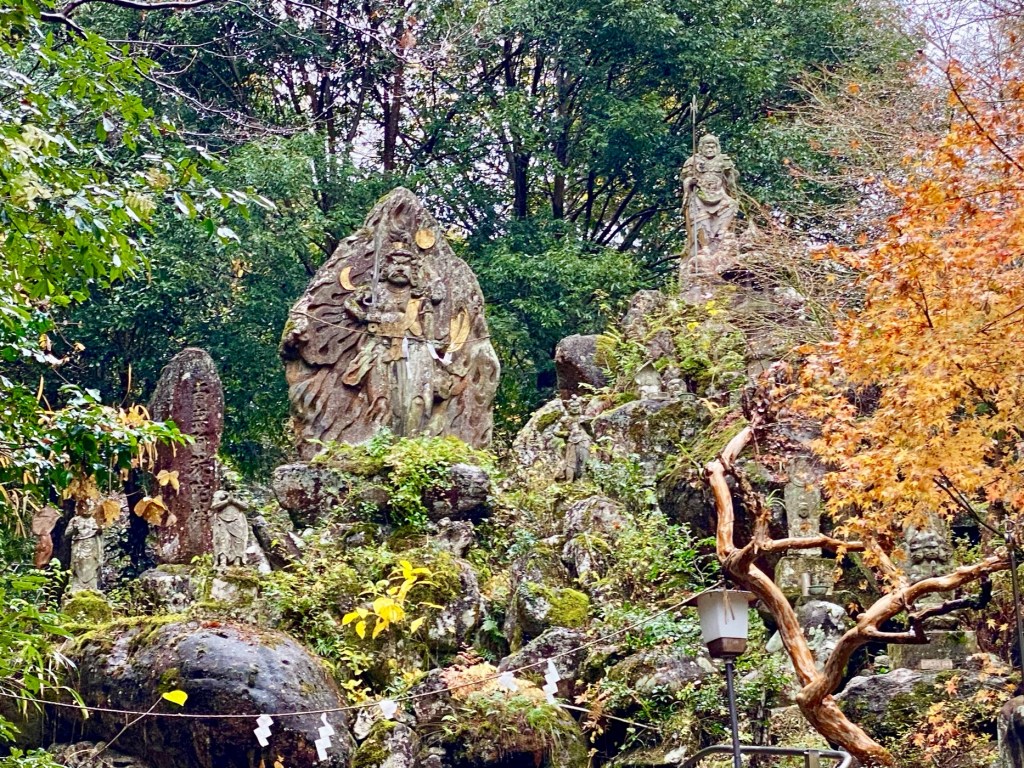
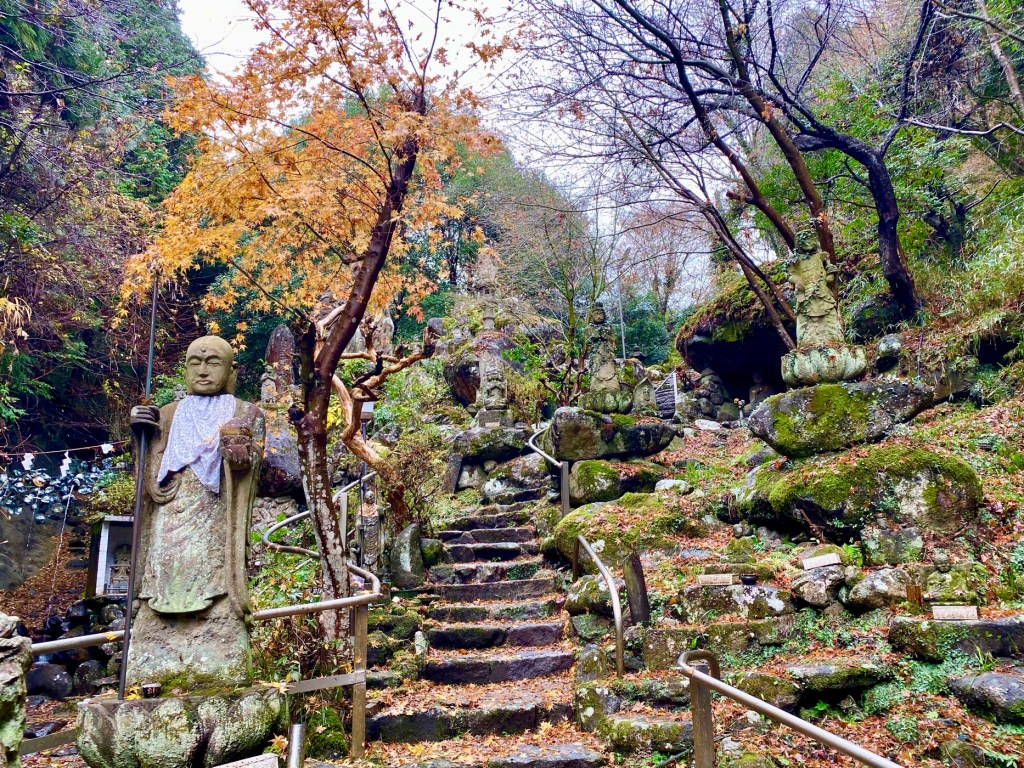
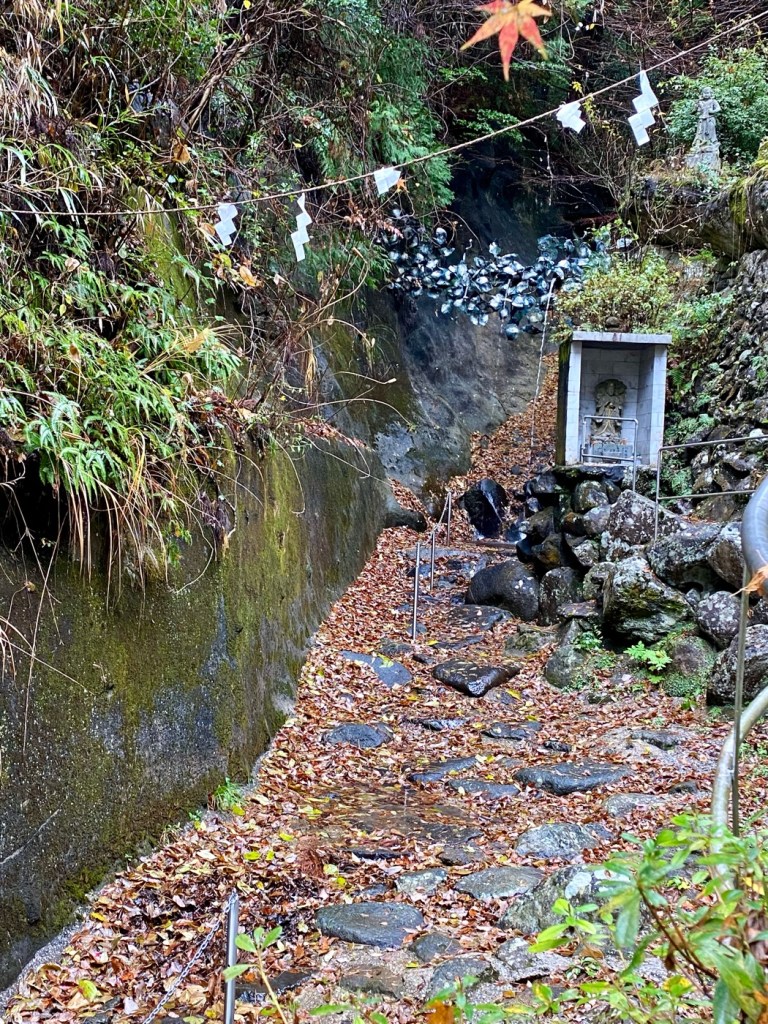
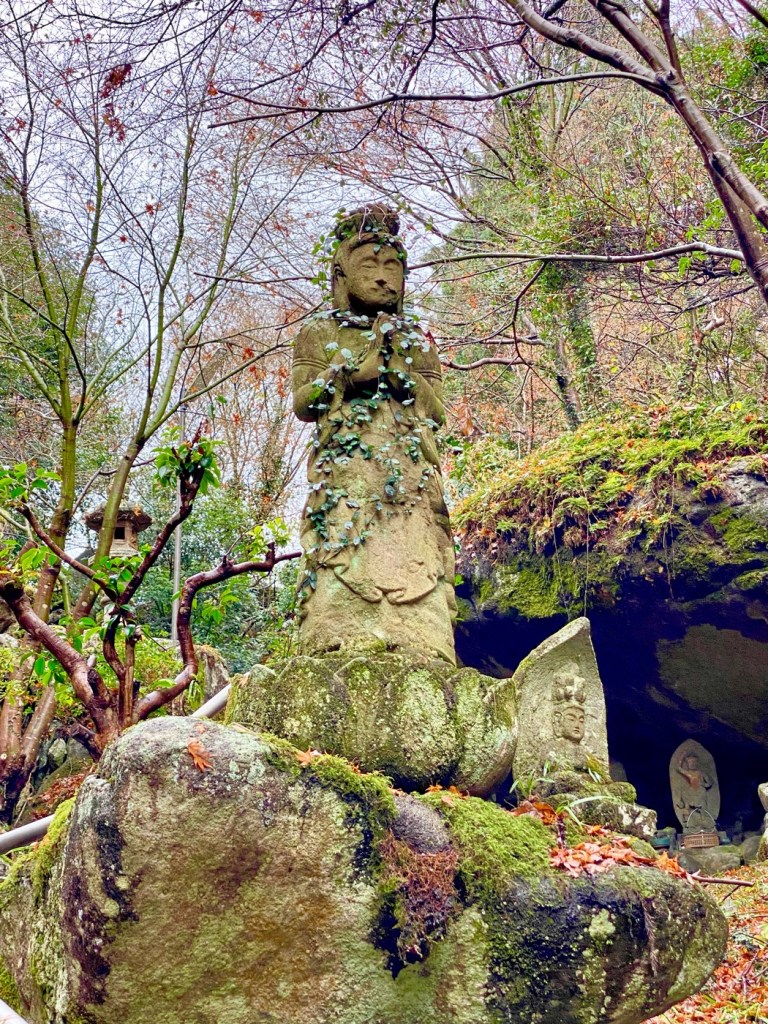
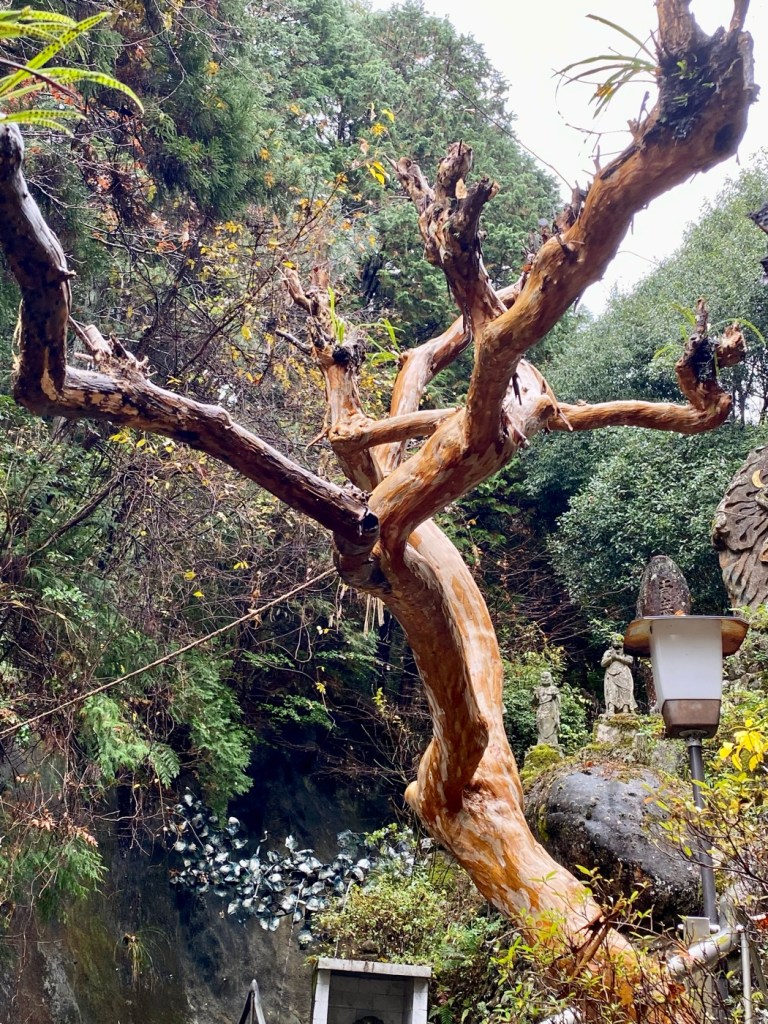


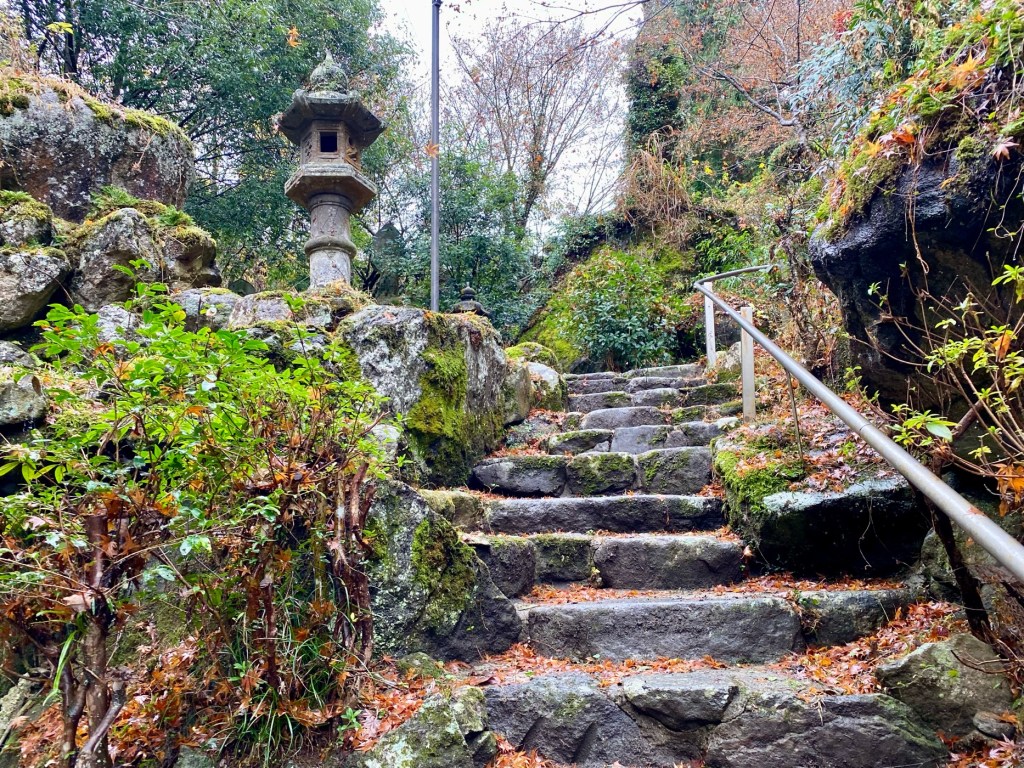
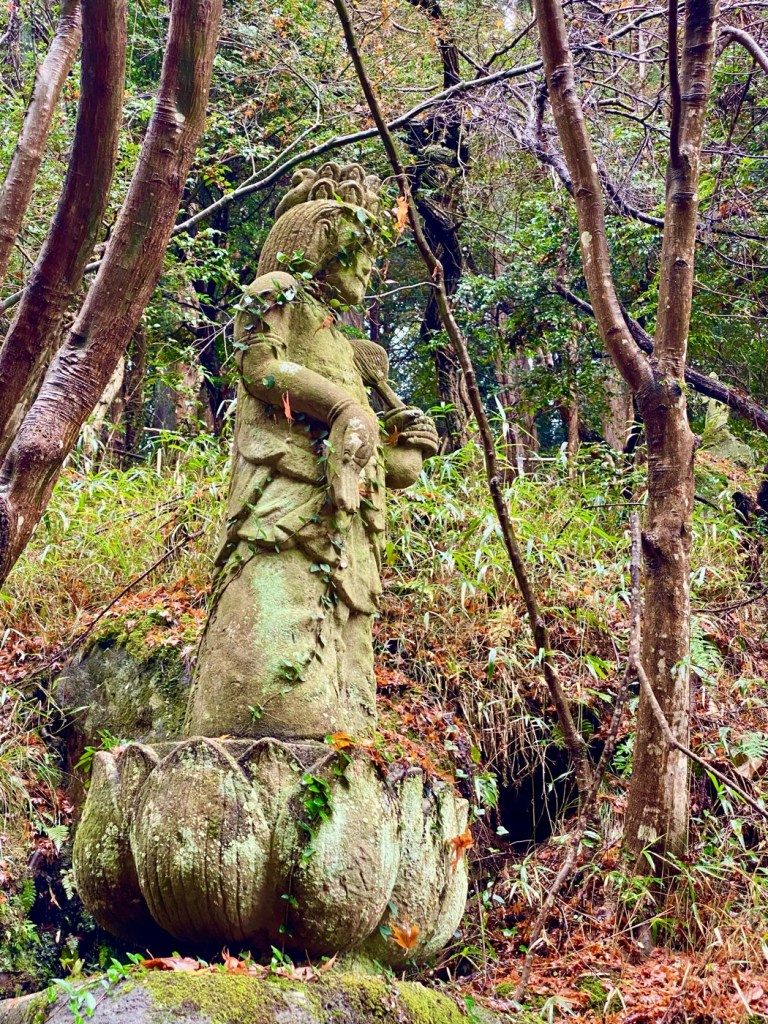
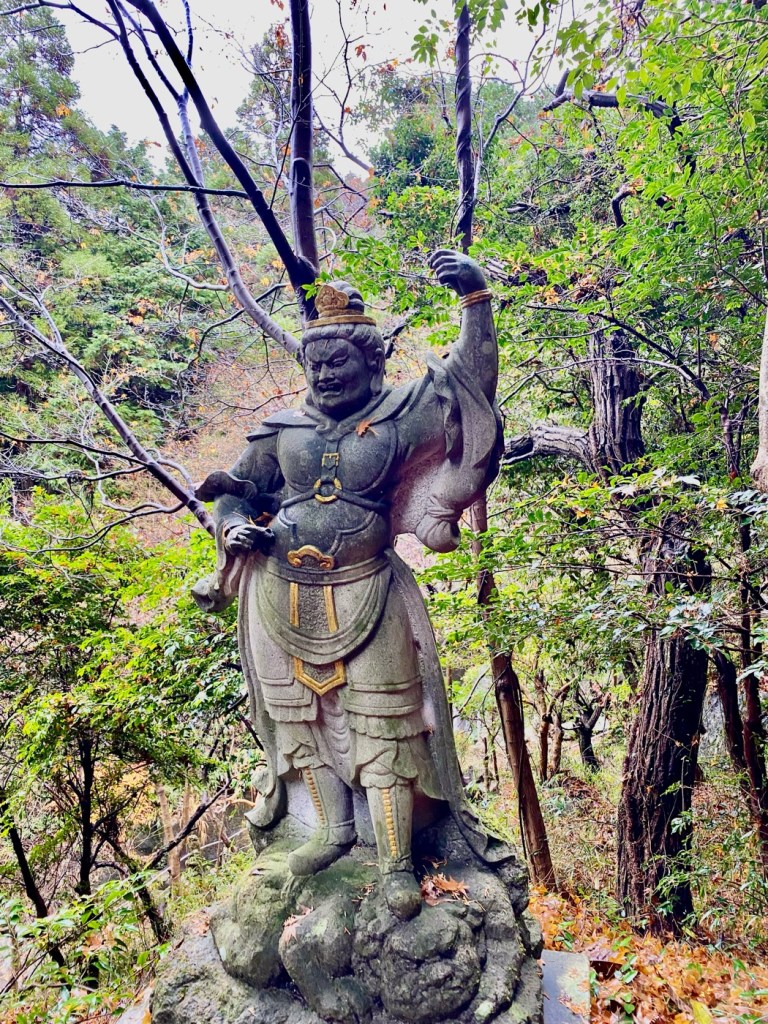
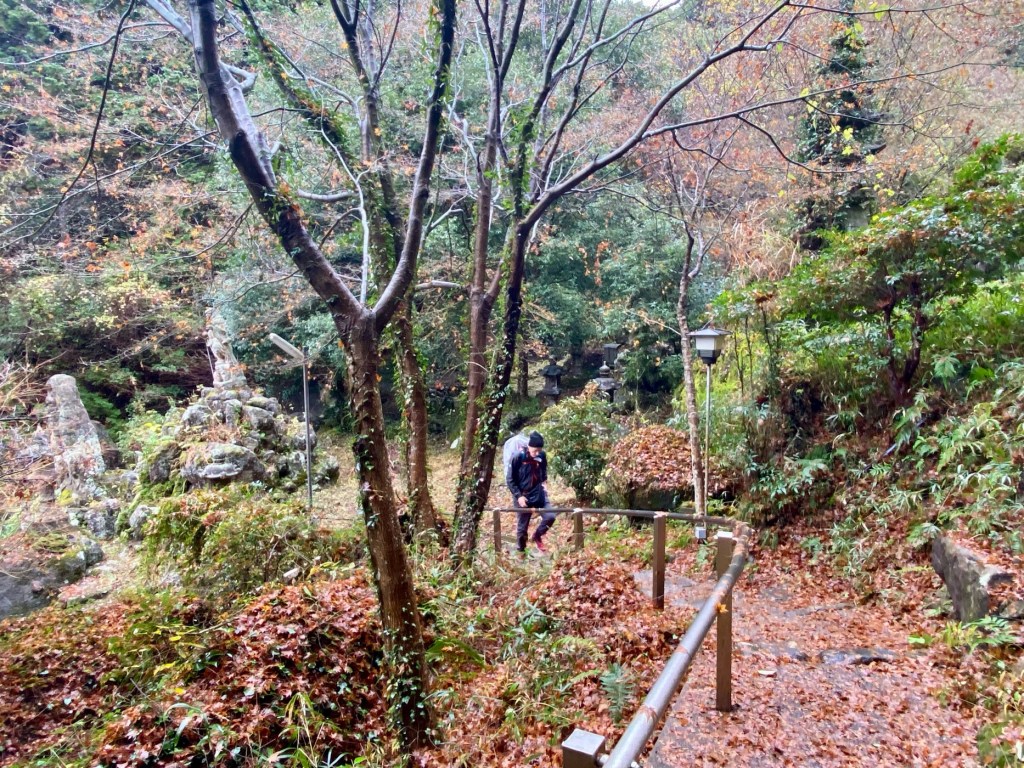
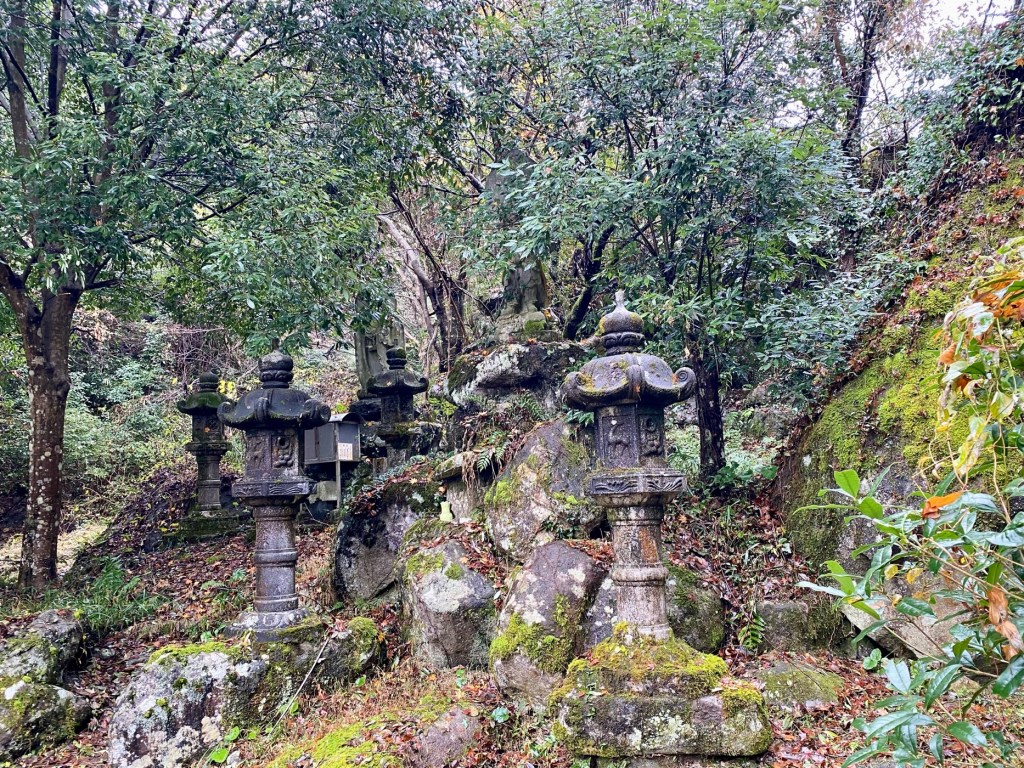
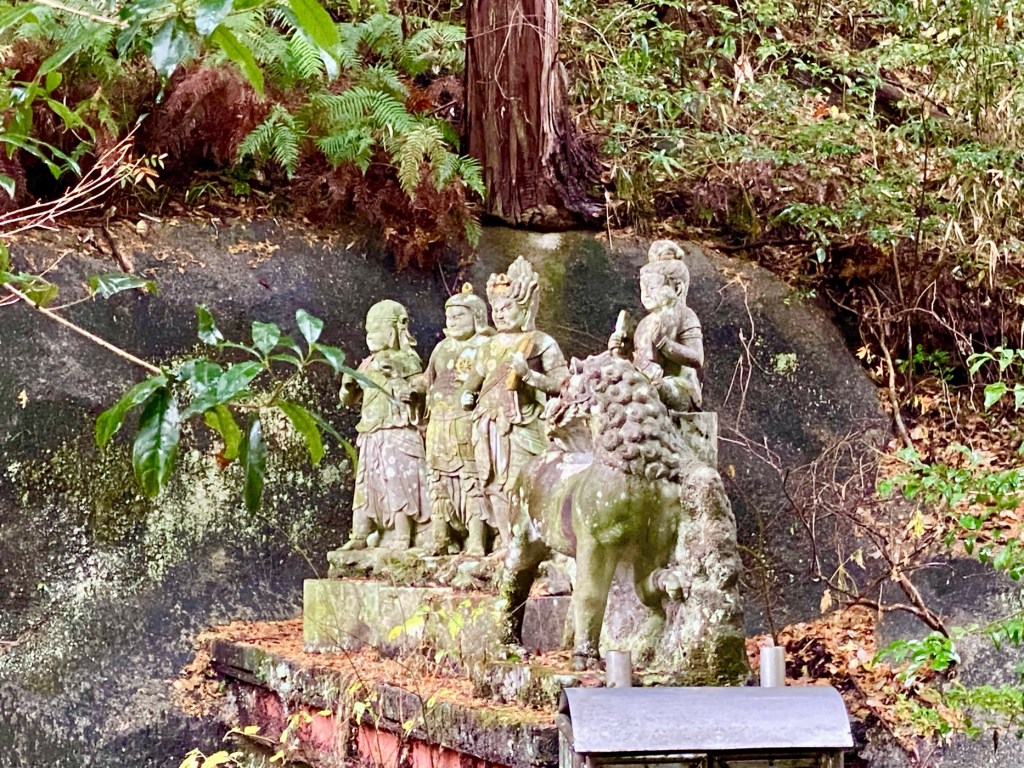
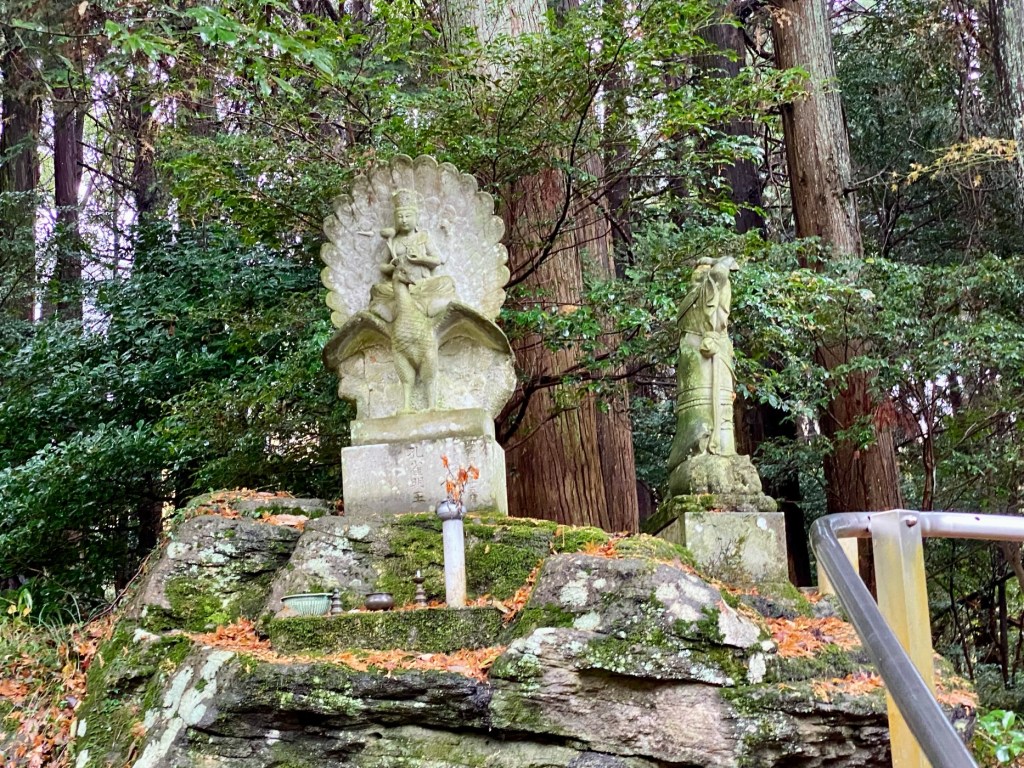
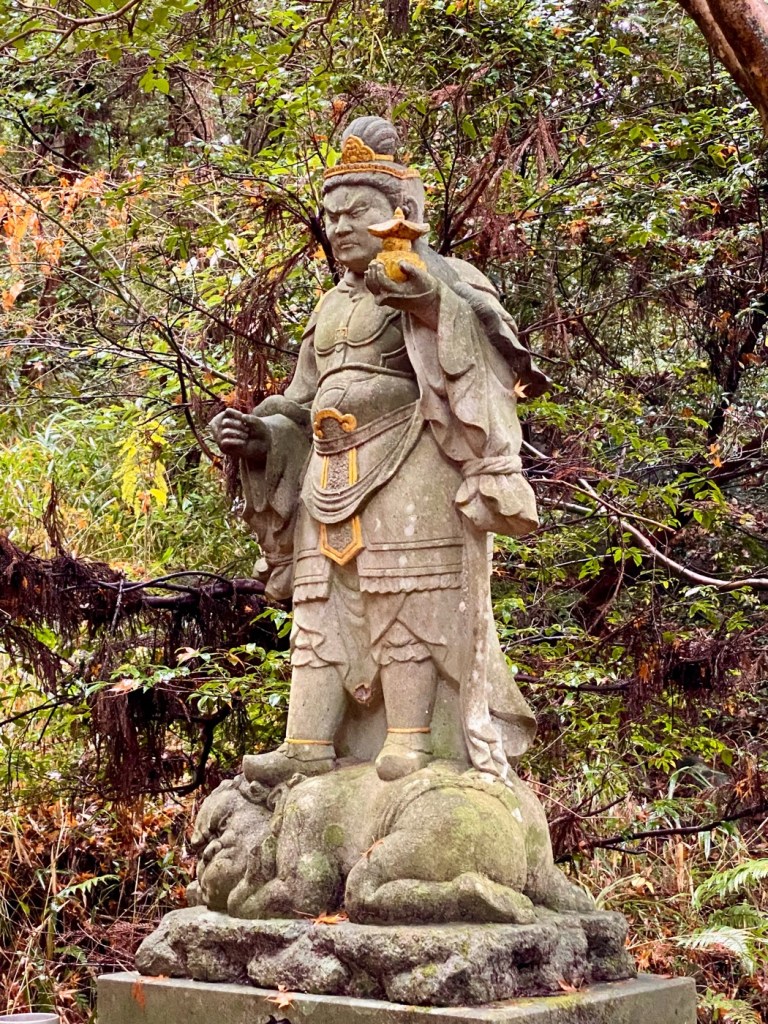
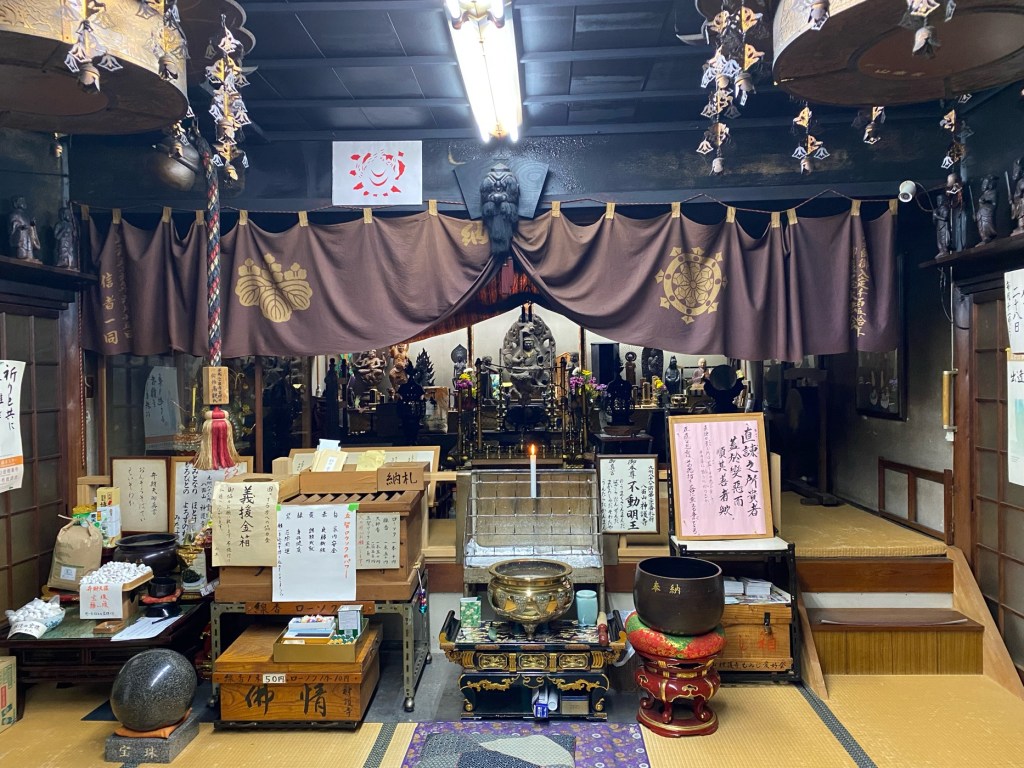
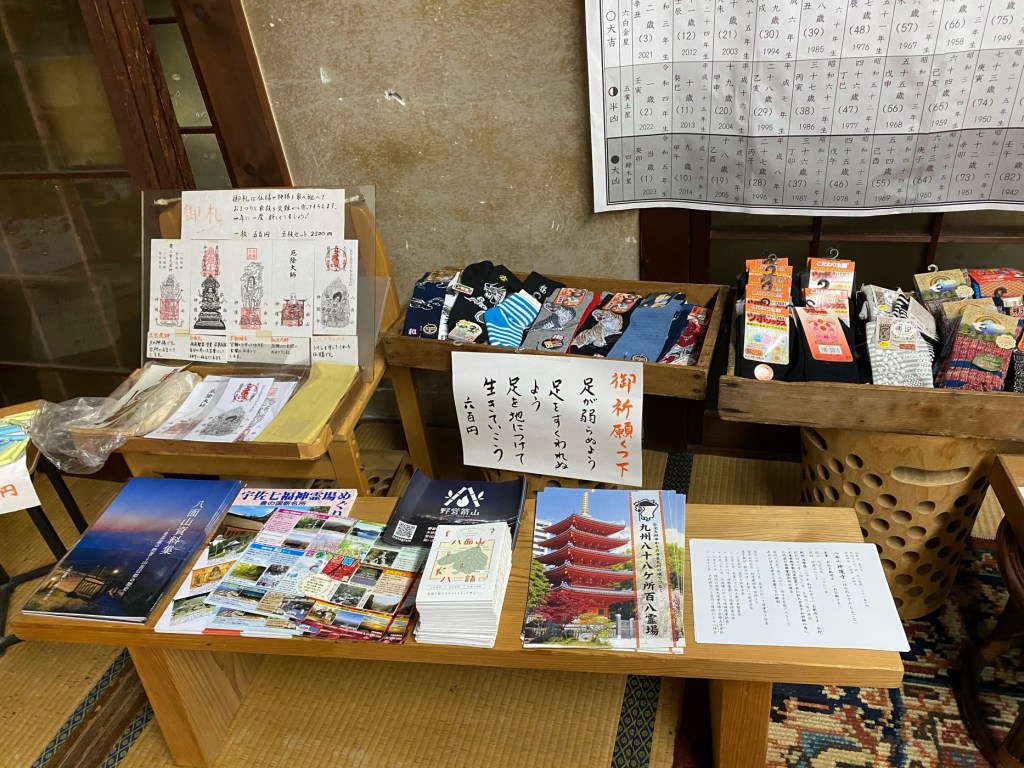
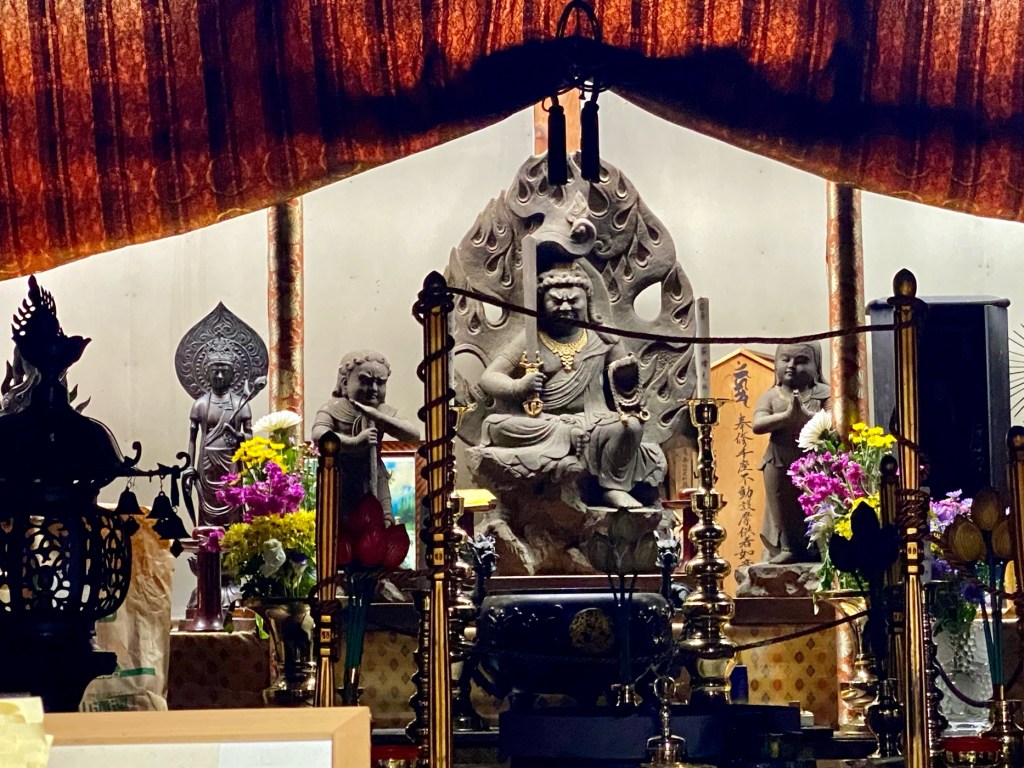
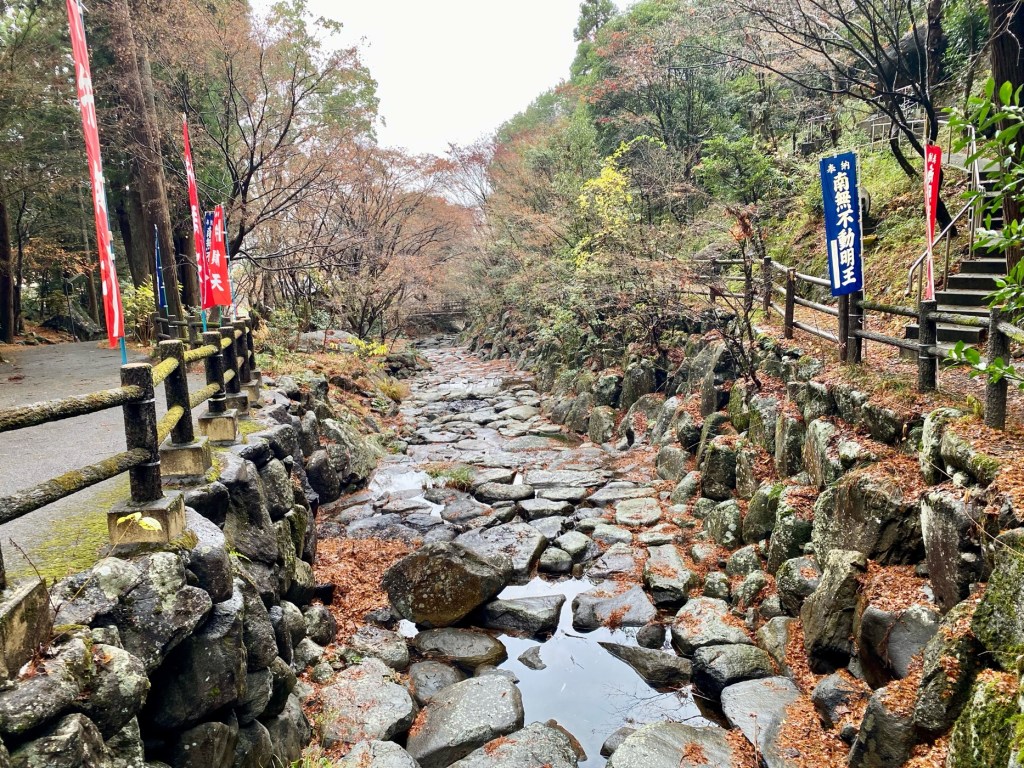
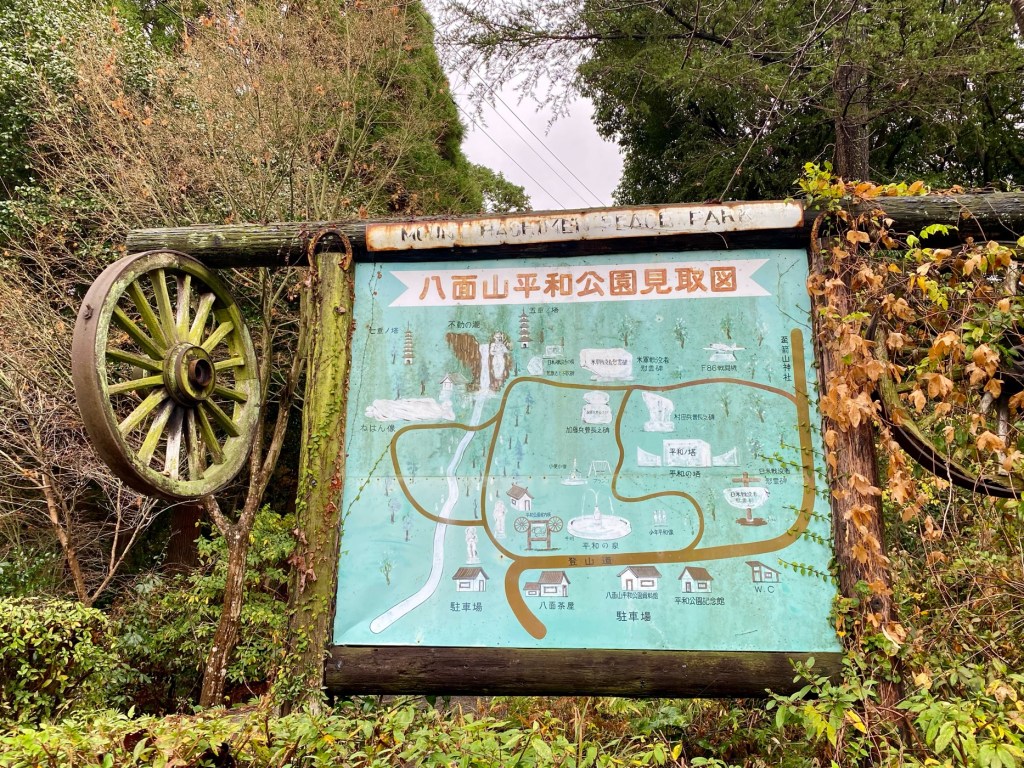
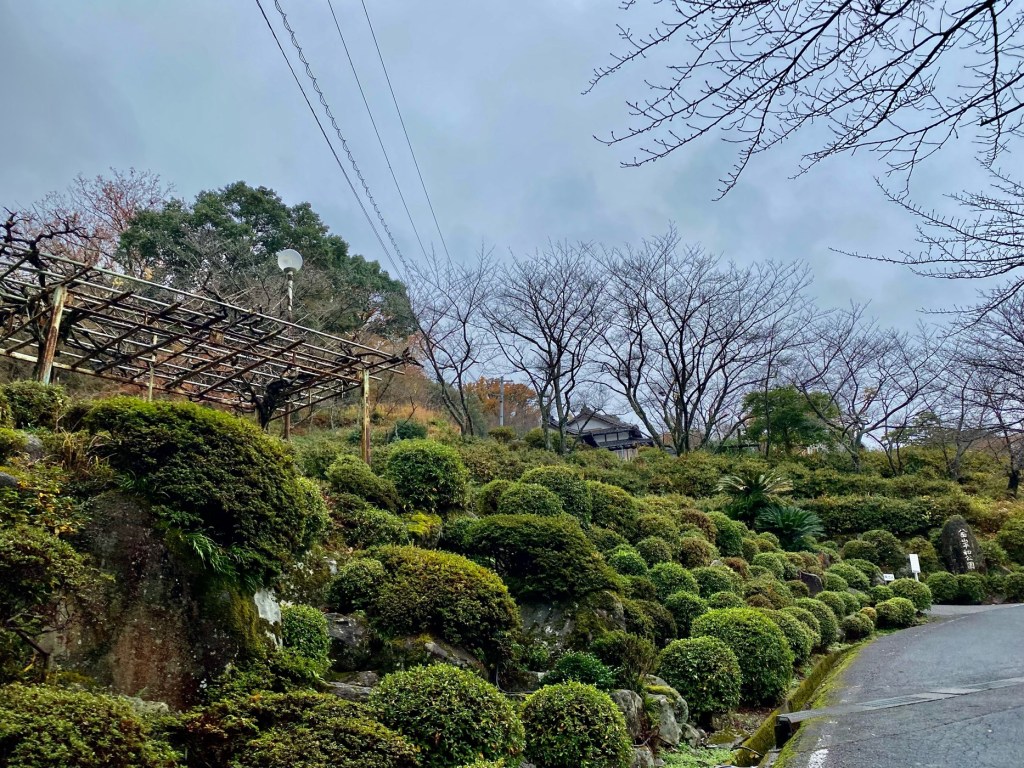
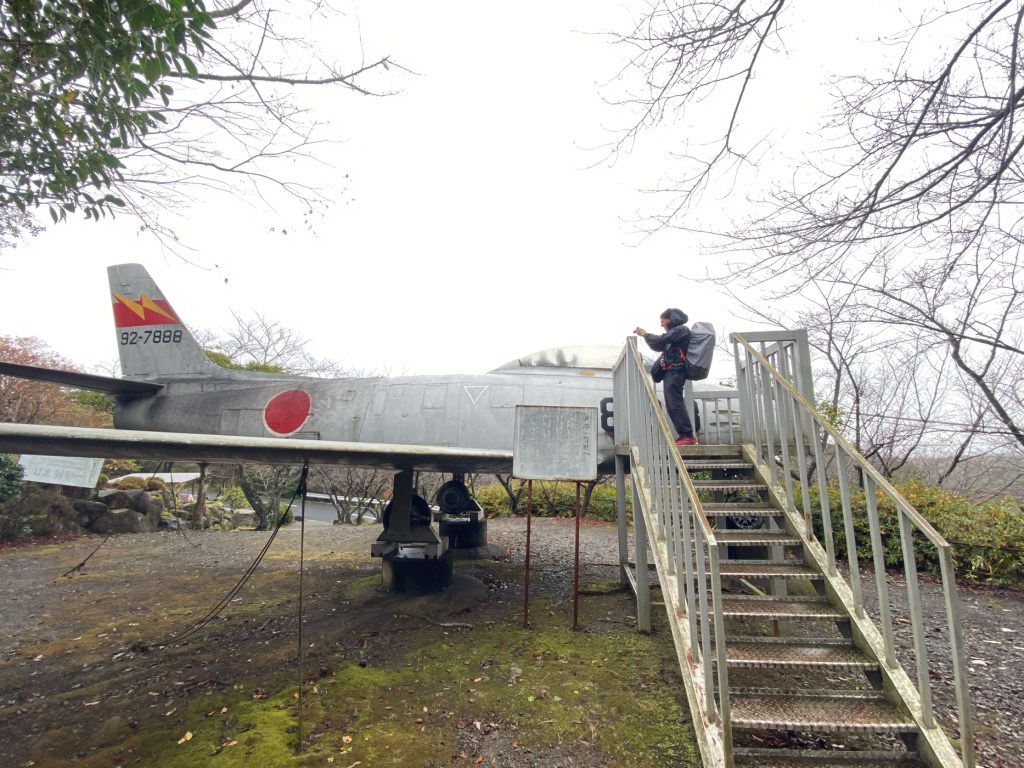
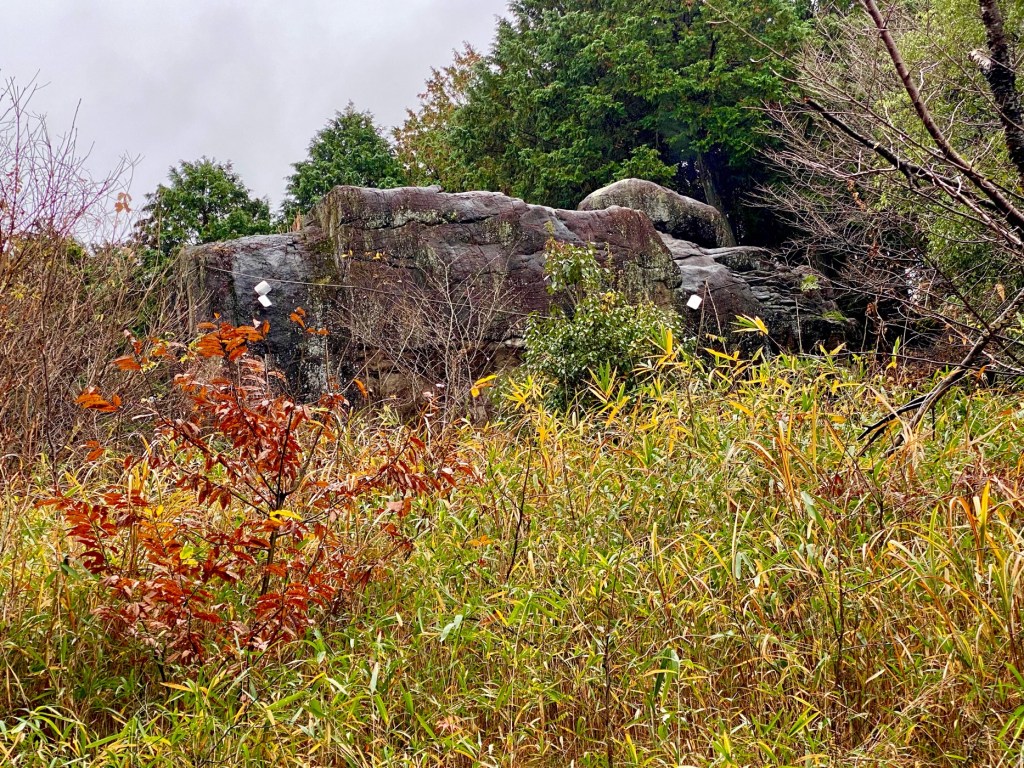
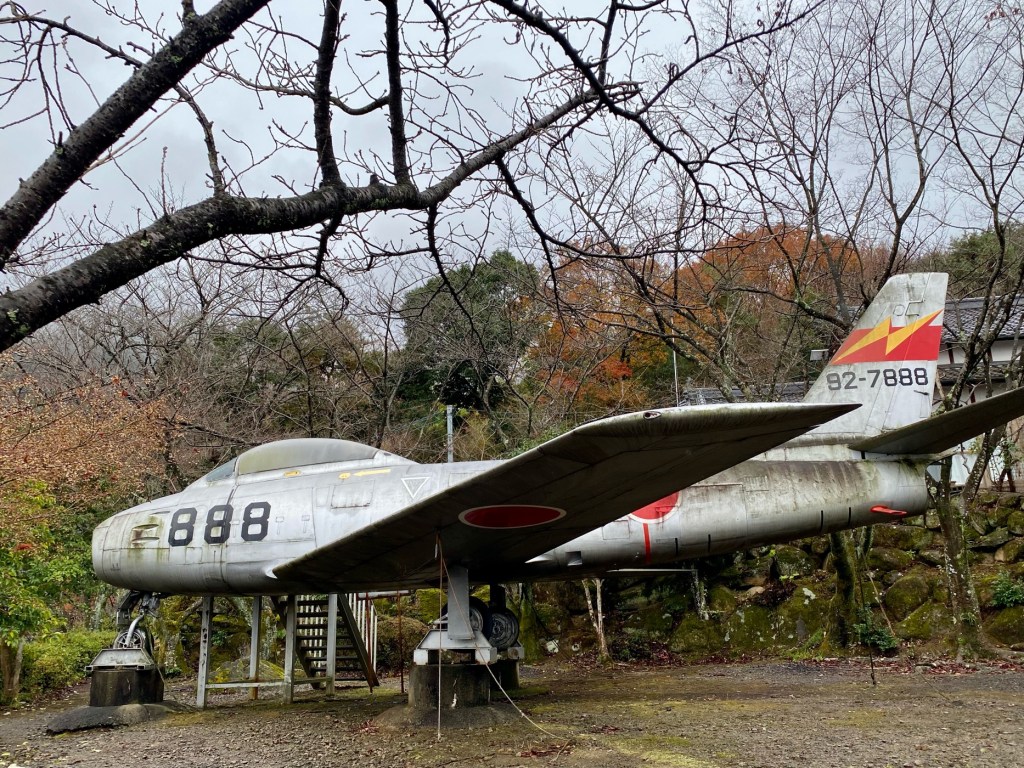
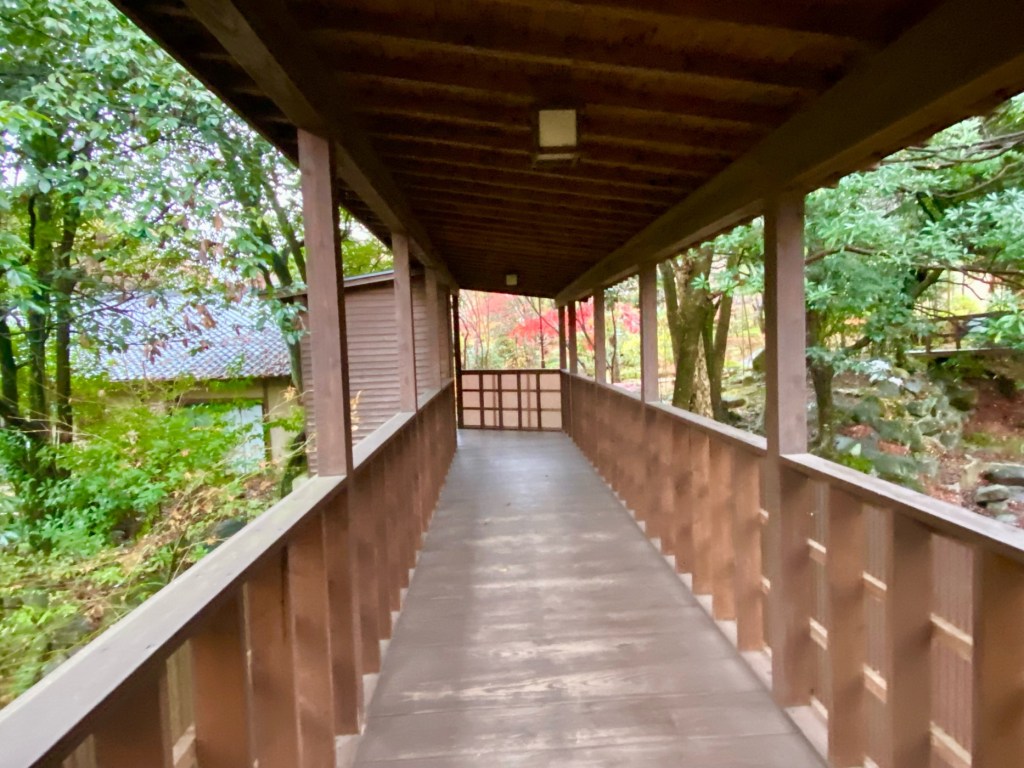
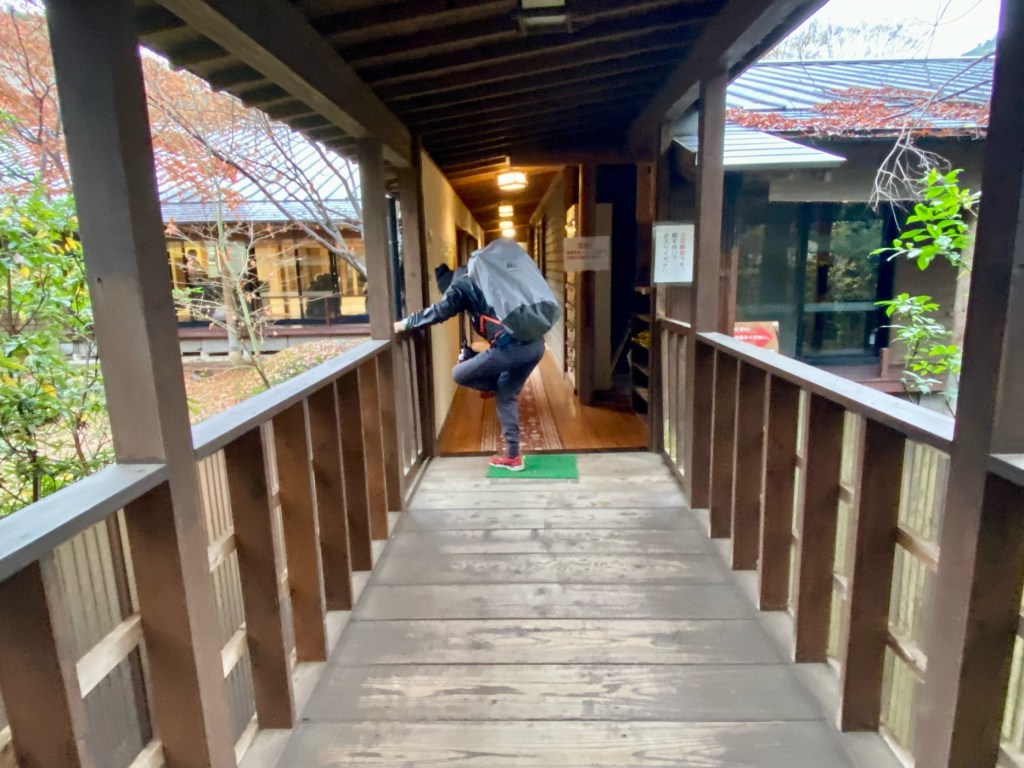
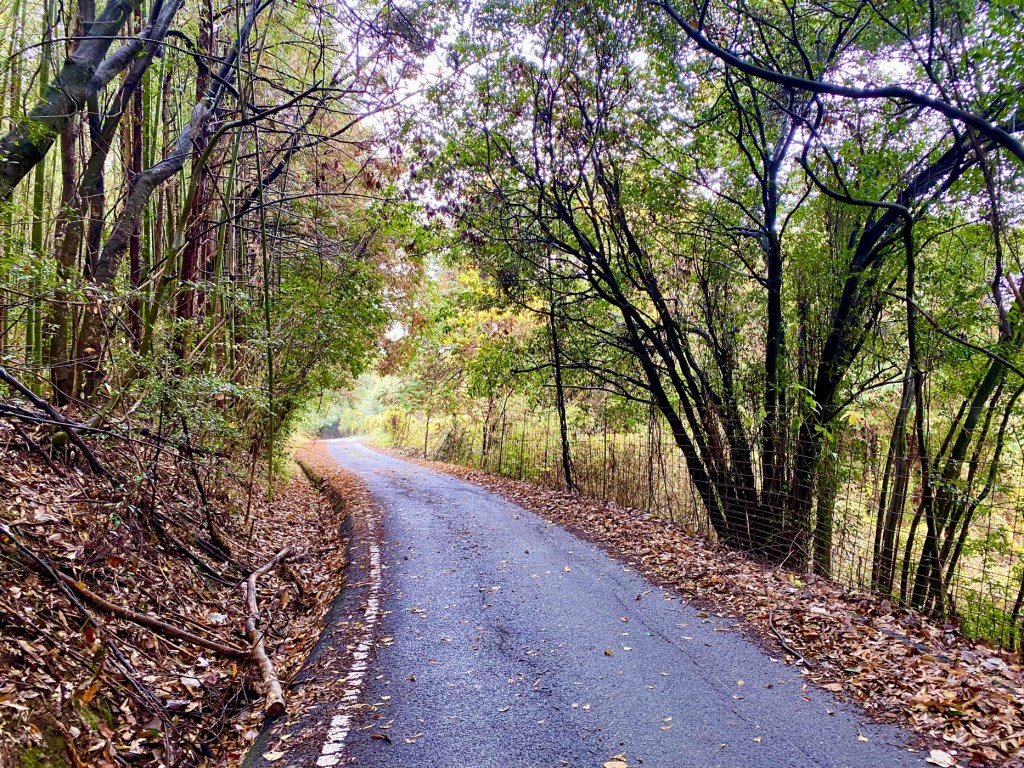
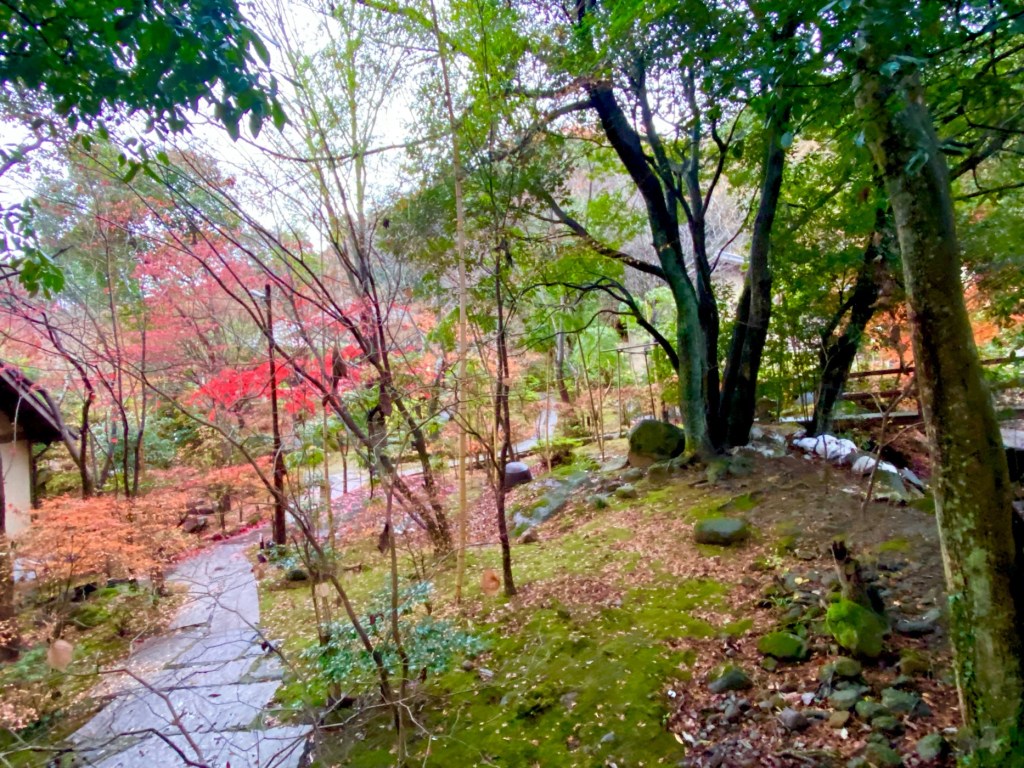
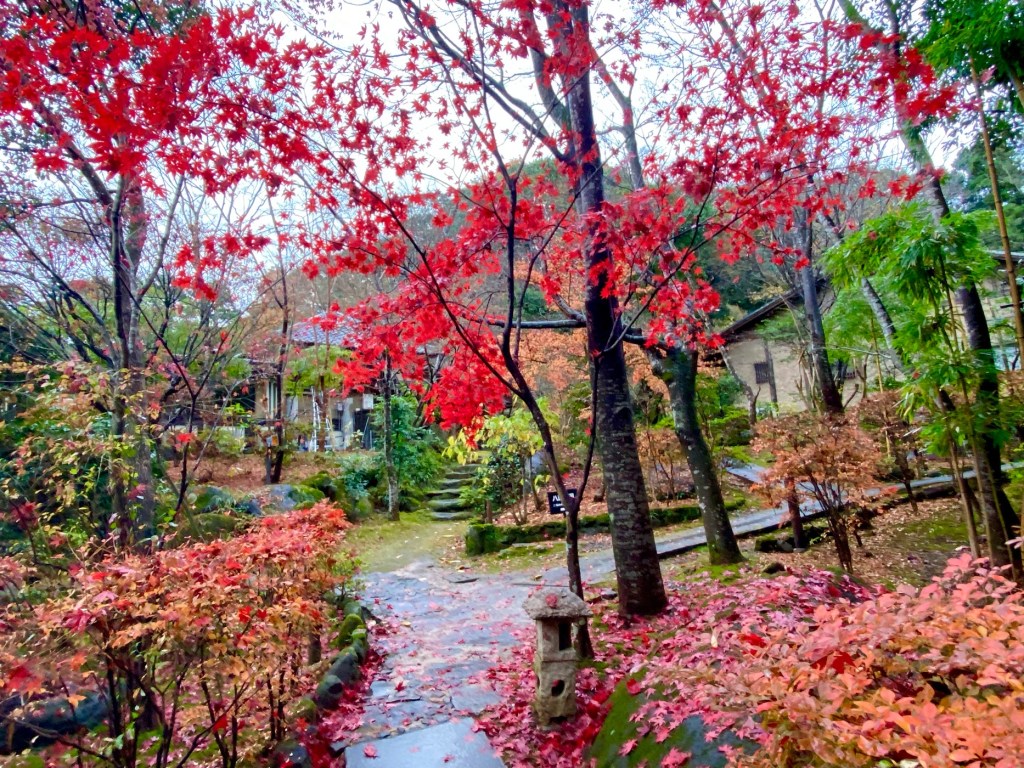

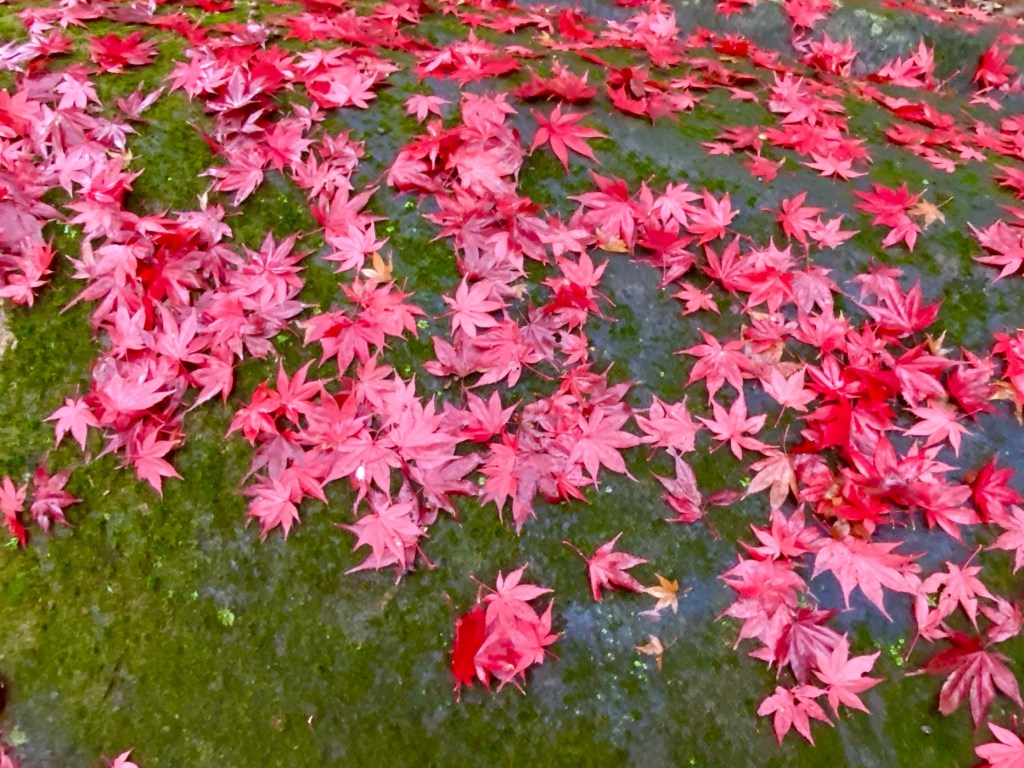
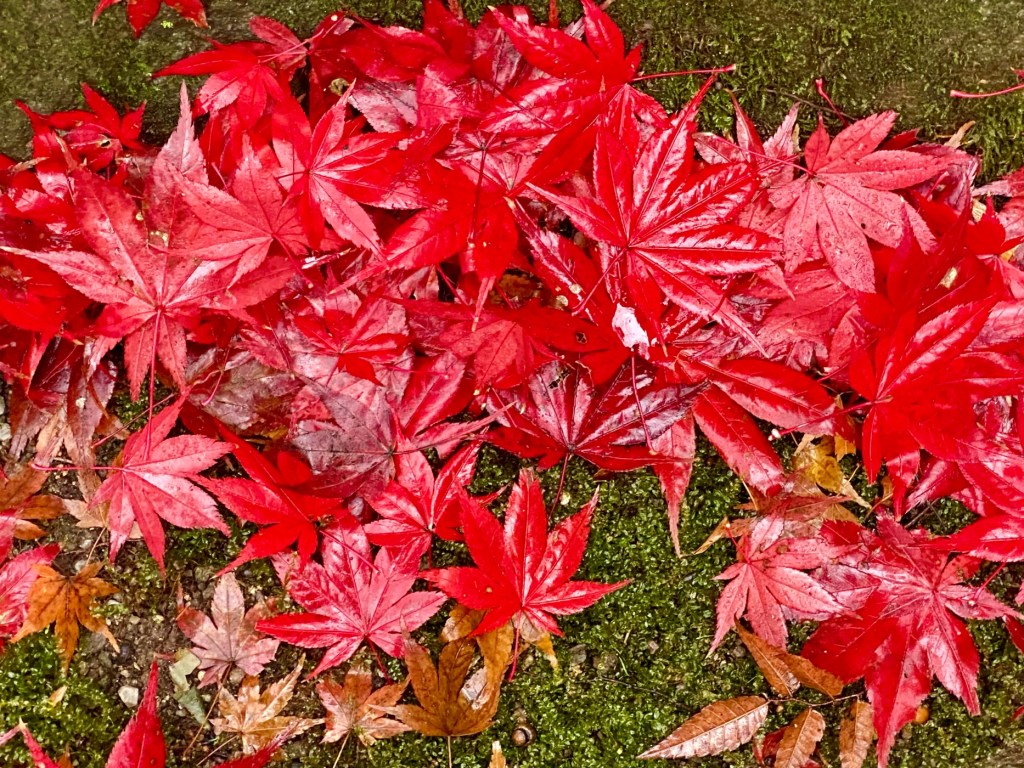
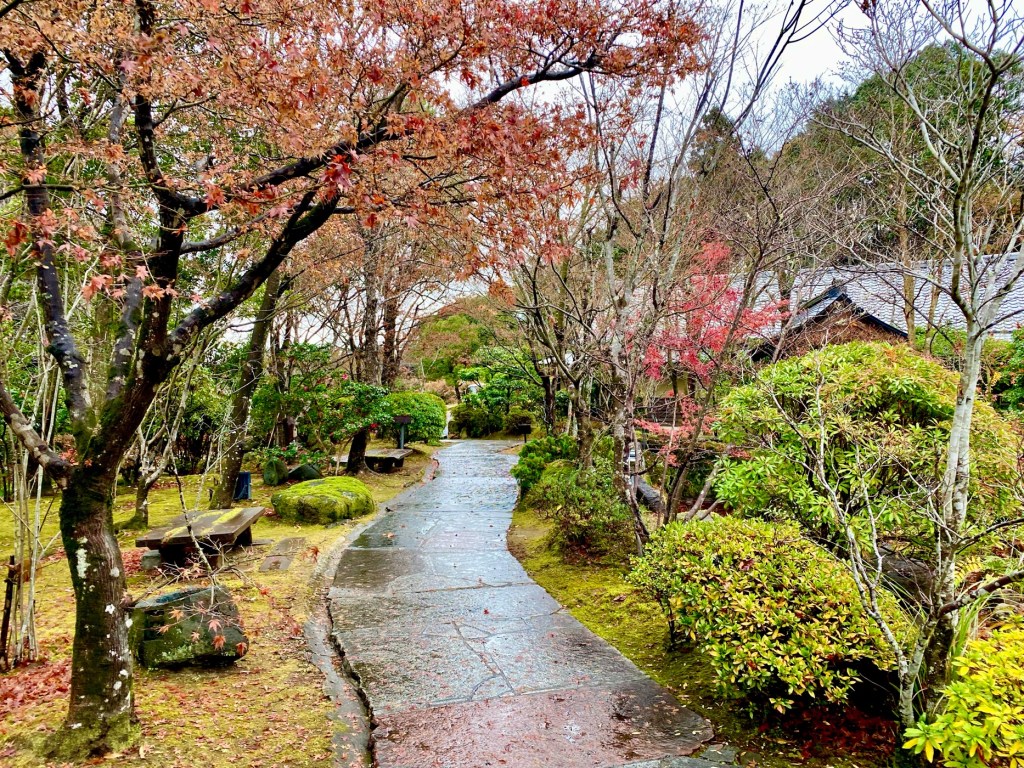
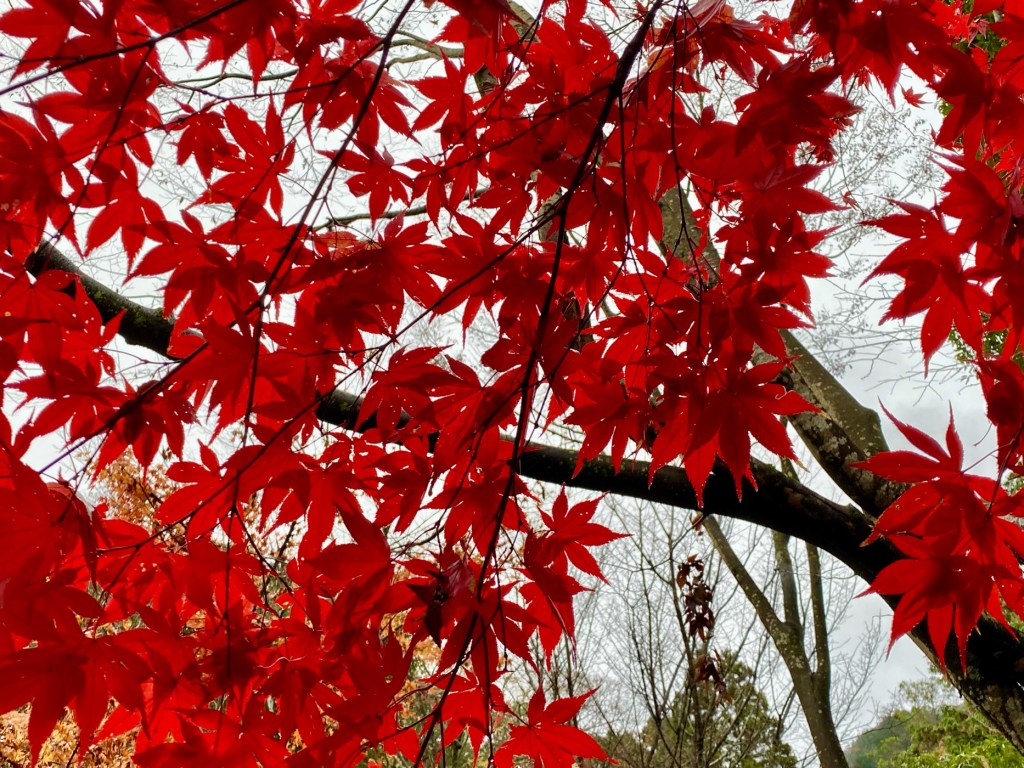
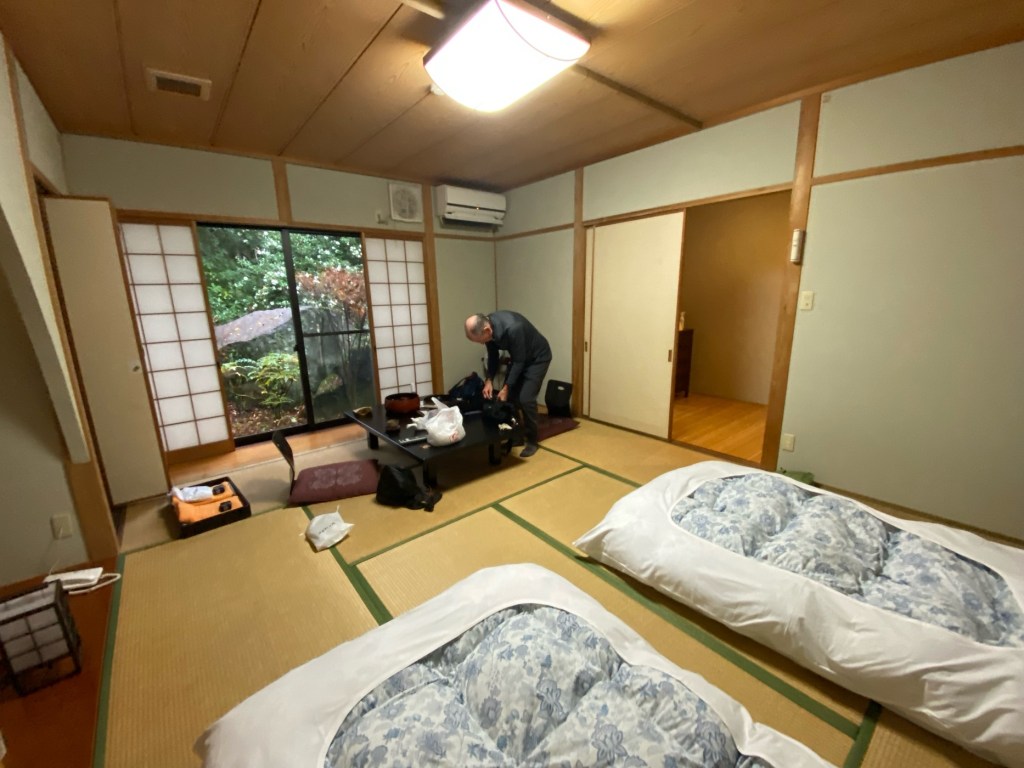
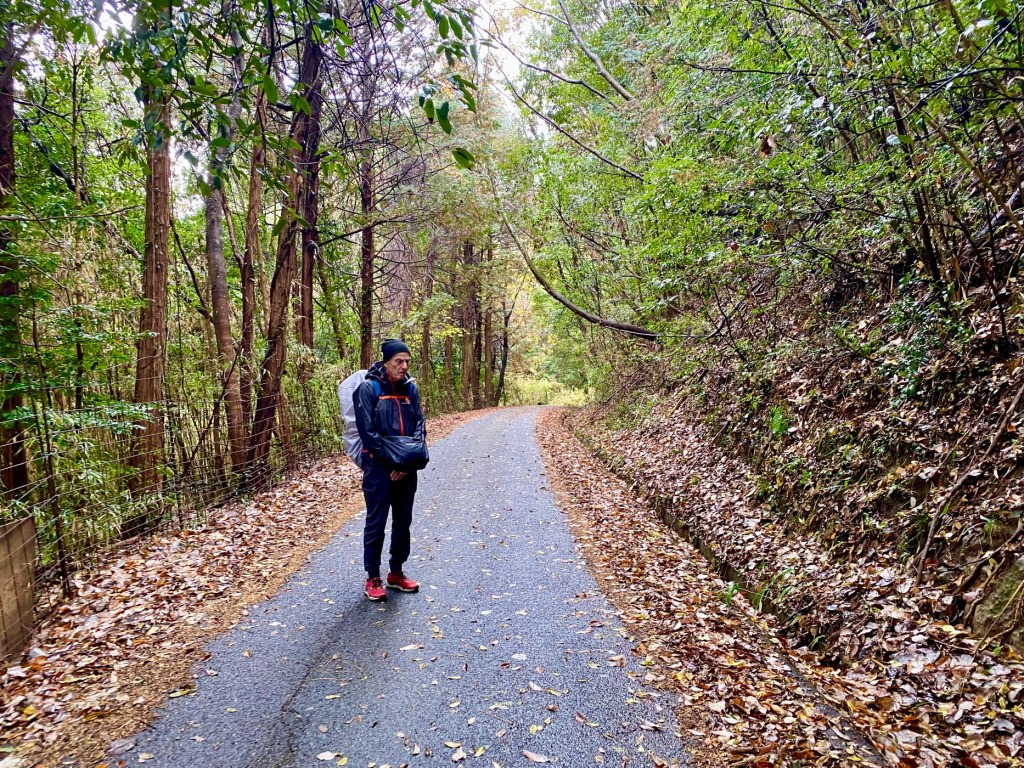
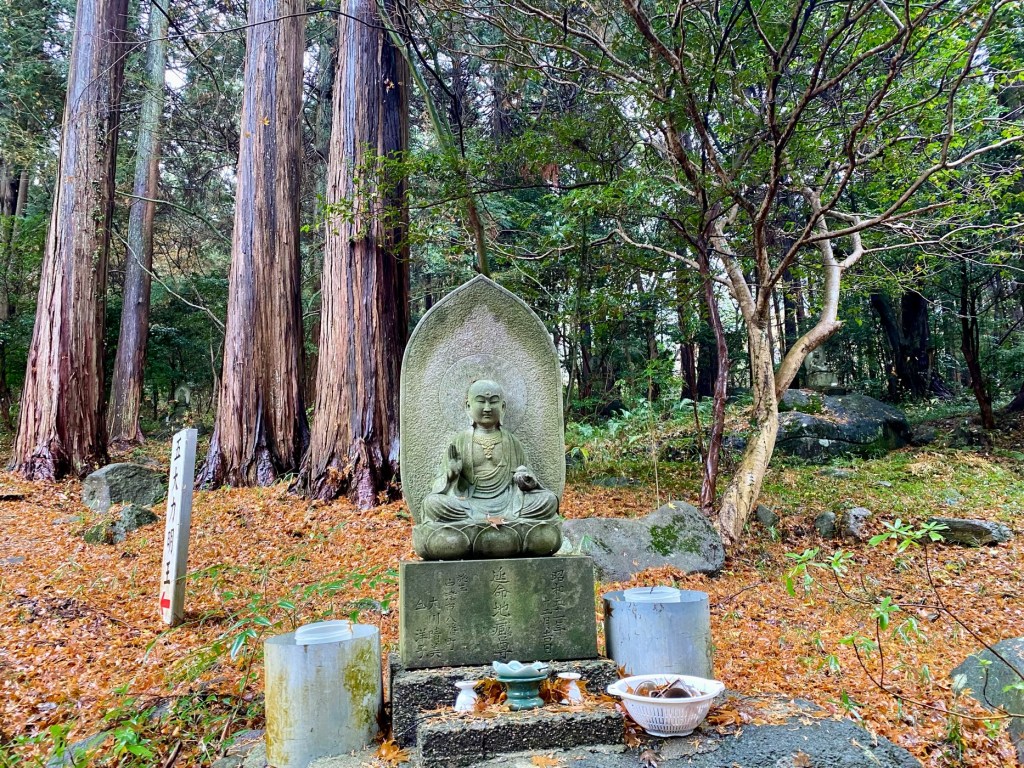
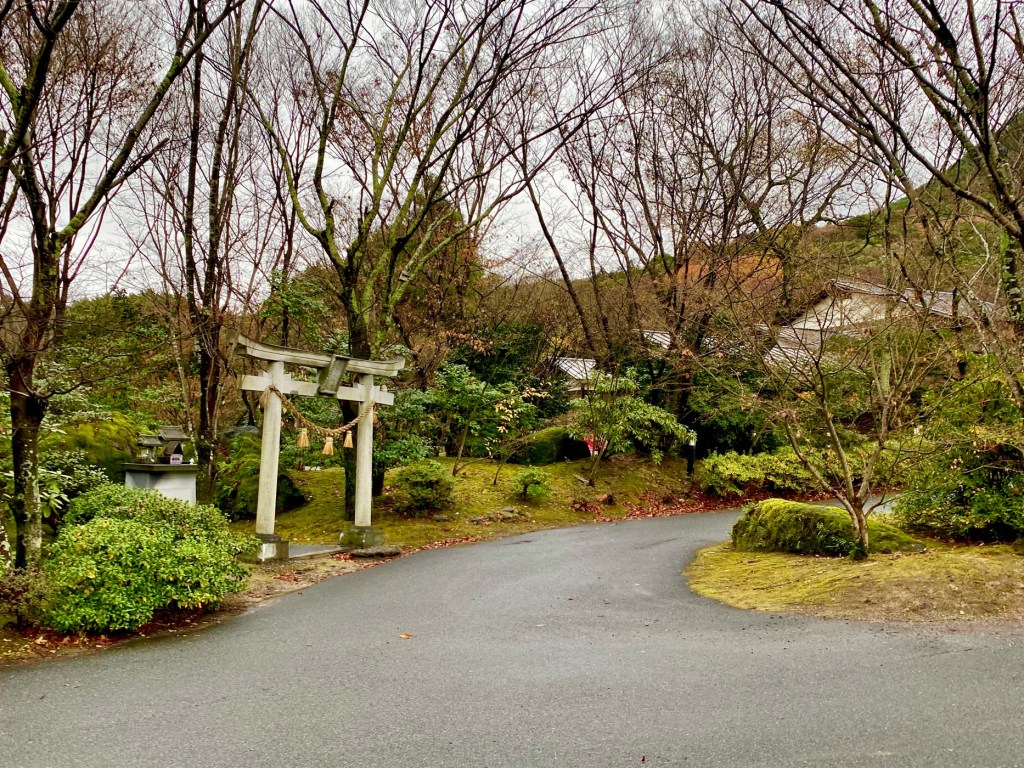
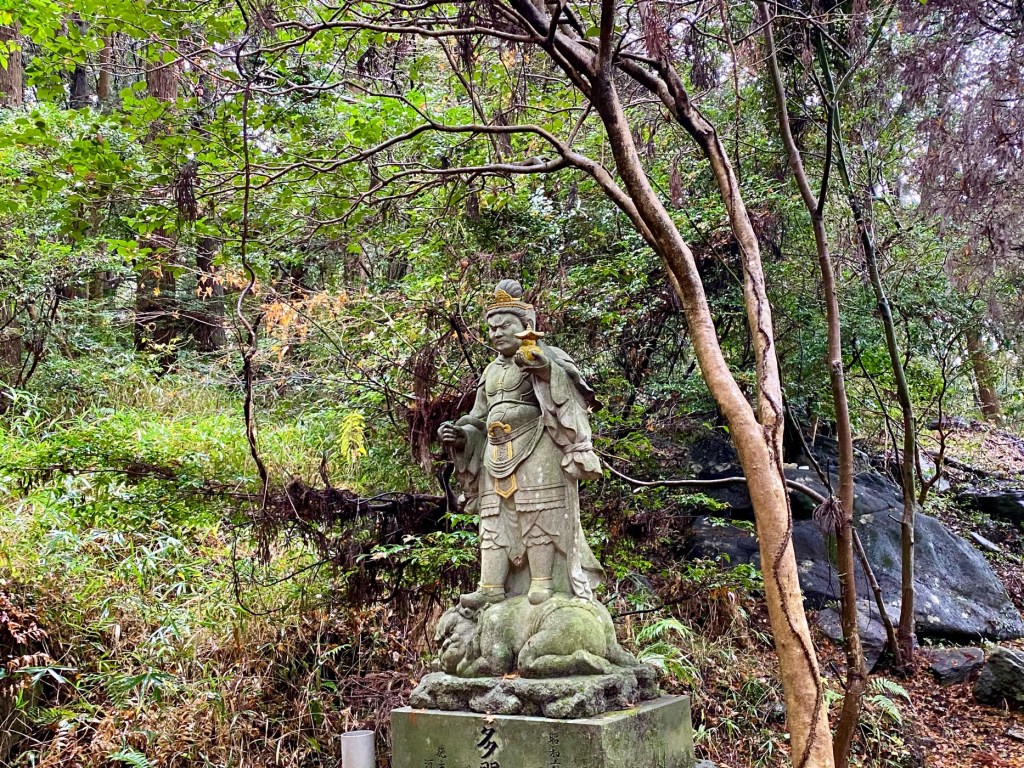
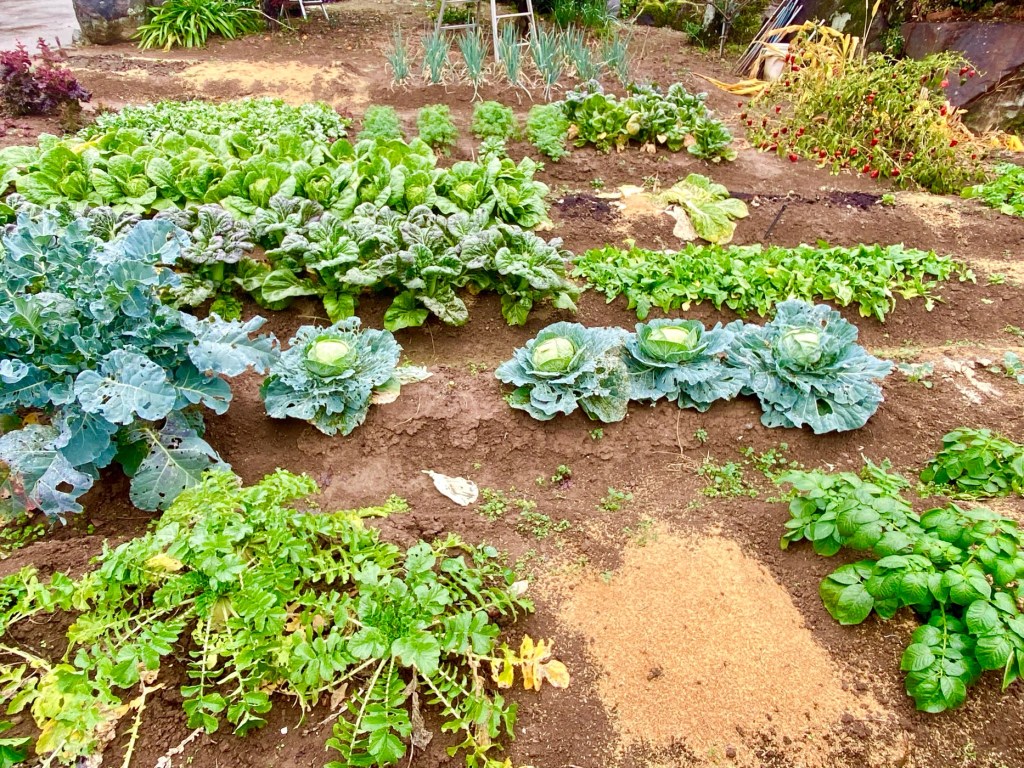
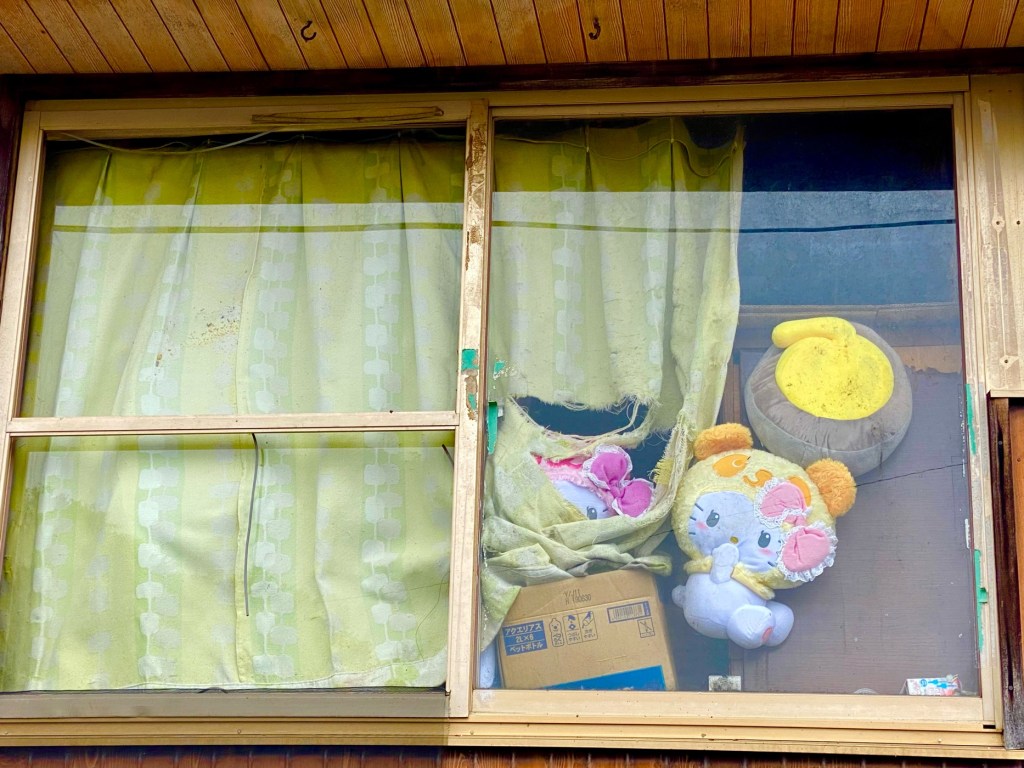
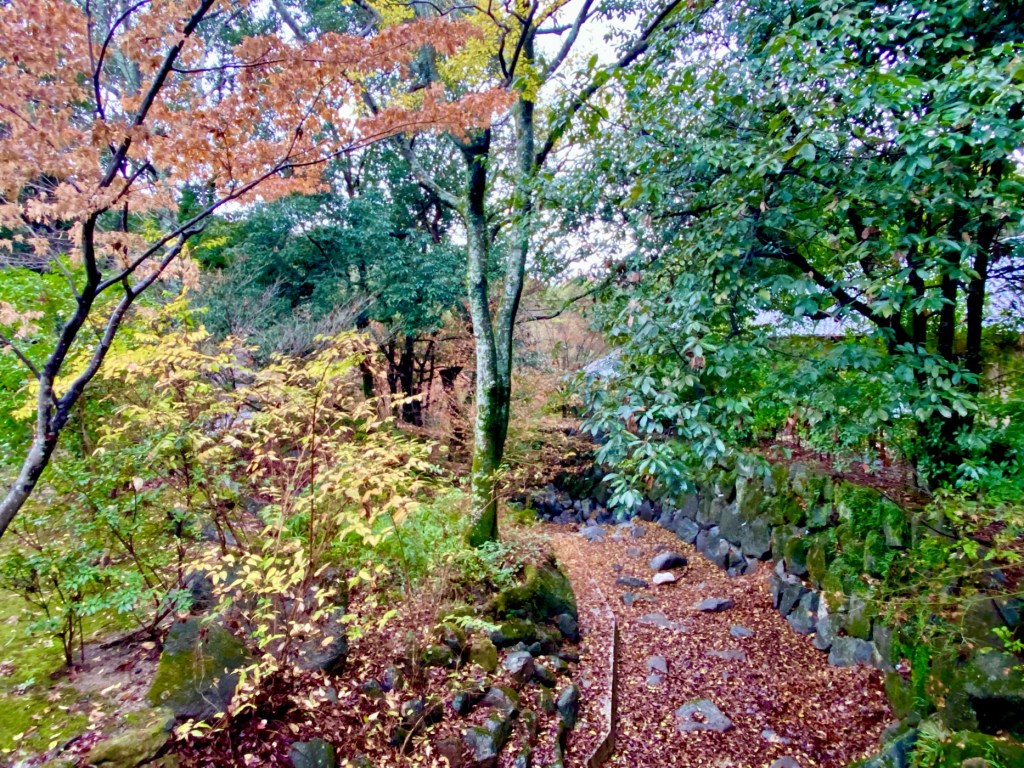
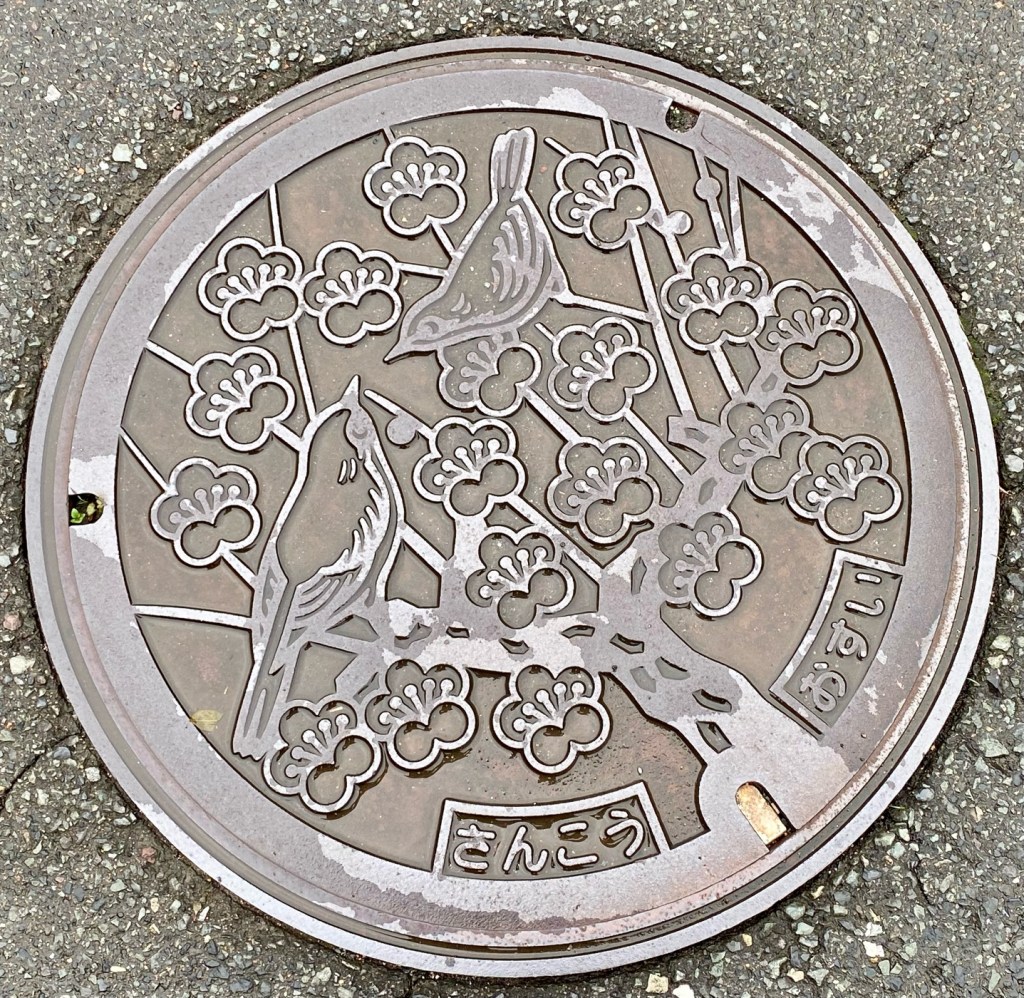
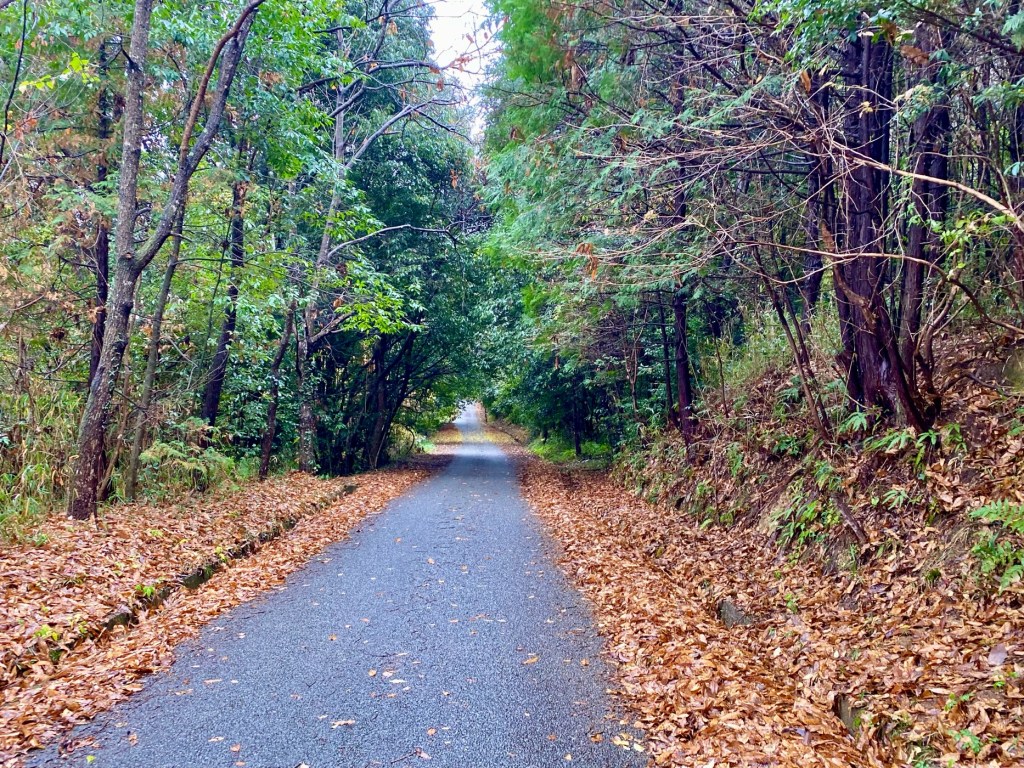
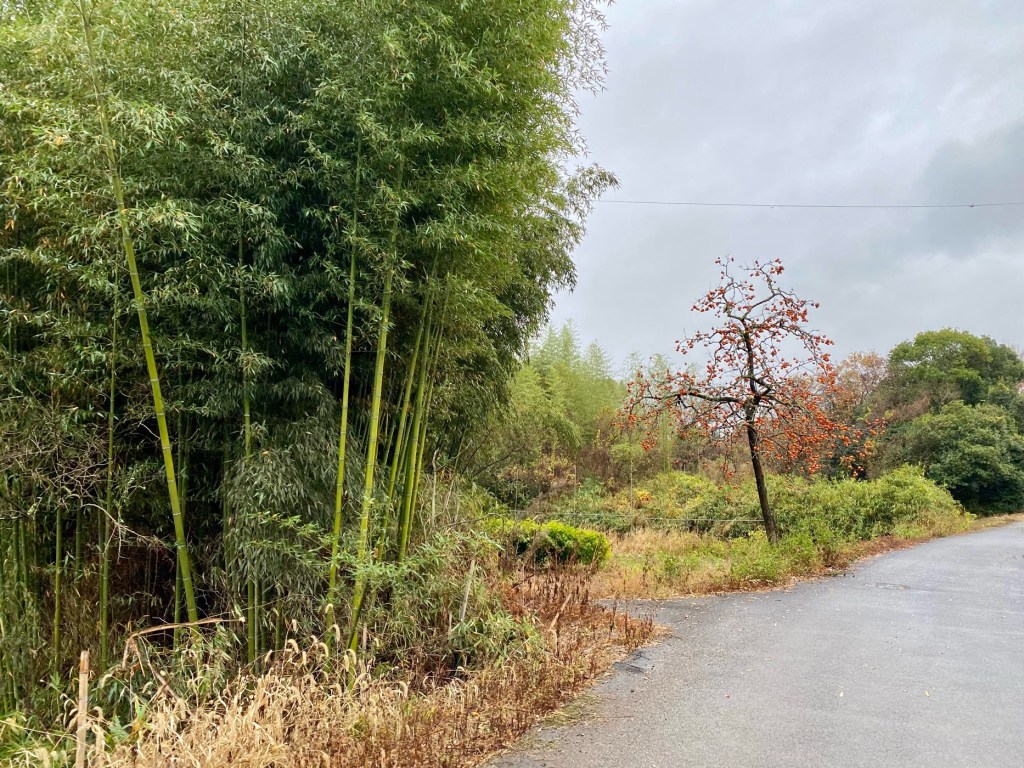
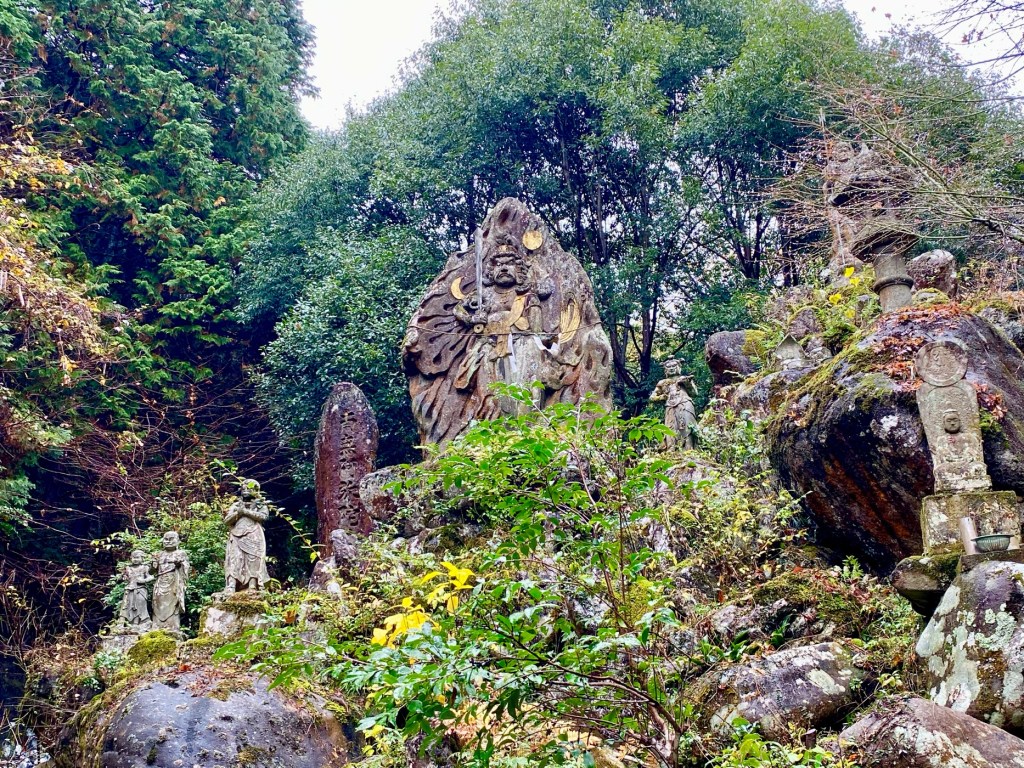
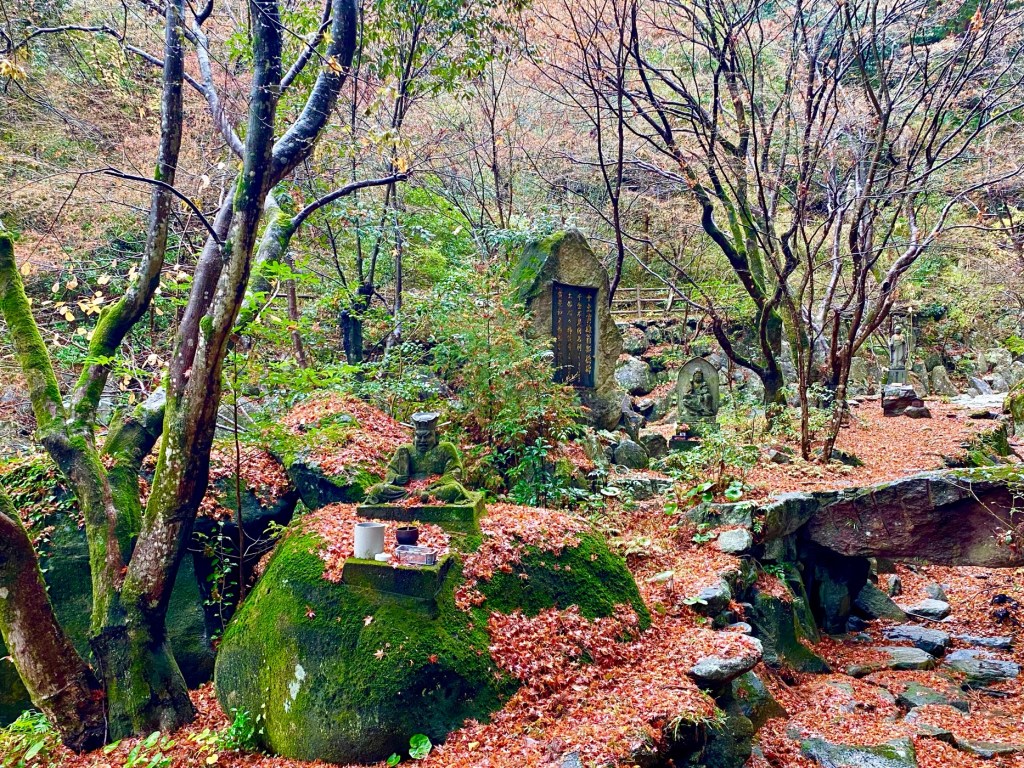
Day 79 - Hachimen Mountain In Nakatsu, and How My Wish For A Taki-Gyo Practice Was Granted, The Kyushu 108 Temple Pilgrimage, Japan
Mount Hachimen is a sacred mountain located south of Nakatsu city.
The summit of the mountain is at 2162 feet (659 meters).
The mountain is known for its autumn leaves, for hiking, hang gliding, and as the home of a big outdoor music festival called “Concert On The Rock”, for many years.
Not served by any public transport, one of our temples, Temple #21, Jingoji, is located on its lower slopes.
In order to get to the temple, we stayed overnight in a small hotel by the river in Usa, a short walk to the road leading to the mountain.
We had booked an overnight at a Ryokan hot springs inn with meals on the mountain, so we can have the whole day and not worry about how to get down the mountain and back to Nakatsu.
We started our day with a breakfast of a banana each and some green tea.
We packed our backpacks and checked out of our riverside hotel.
Before starting our walk, we bought rice balls and fresh Kumquats to eat for lunch along the way.
Soon after we started walking it started to rain.
We stopped to put on our raincoats under an overpass, when someone driving a car threw an empty can off the bridge.
It bounced noisily a few times and landed a few feet from us.
How can people be so careless…. Littering our beautiful planet and possibly hitting people who are walking under the highway….
Along our walk, we encountered three road closures, each full of construction crews.
In all three locations, we had no other road to use as a detour except to retrace our steps a long way, which we didn’t want to do.
We simply walked through the construction and everyone greeted us politely.
The dynamic between us had not started well today.
We were arguing about nothing and Jules was hurt by something I said and walked forwards really fast.
I don’t know why we do this.
We are really best friends and partners in life, and we love each other dearly.
But we sometimes fall into wrong minded thinking and see the things that are wrong in each other, instead of appreciating what is right.
I guess that we were irritable and it is hard to communicate well when you are walking in the rain along a road busy with traffic.
By midday, we took a rest stop by a small shrine.
We cleared the bad energy between us as we sat, discussing what route we should take.
We were nearing the mountain, but we noticed that the road we were walking on had many trucks.
It either meant that there was a quarry nearby, or that we were walking towards a major construction area.
We decided to take another route, which went through a village, and we would even have the option of stopping at an organic cafe.
We were not really hungry, as we had had some tea and a rice ball about an hour earlier, but it would be a nice break from the rain.
We walked until we reached the cafe, located inside a farmhouse.
They were not yet open and told us that we would have to wait about half an hour.
It was too cold and rainy to wait outside for half an hour, so we continued walking.
We reached the mountain road and the traffic became very light. When we crossed the bridge, we did see the newly built toll road highway below us, which was not yet open, but would surely bring noise and traffic when it did open.
We visited a shrine on the lower slopes, and the road became significantly prettier as we climbed up.
We were surrounded by forested slopes.
We stopped to have hot tea that we had brought with us, at a covered picnic table by the big black rock of Hachimen mountain.
It is a tourist site and also the beginning of one of the hiking paths.
There was a beautiful mist over the summit of the mountain, and autumn leaves carpeted the path.
Finally, we arrived at Temple #21, Hachimen Jingoji Temple.
The temple is spread across the slopes, with walking trails among the stone Buddha statues.
There are dozens and dozens of stone statues reachable by paths that wind through the forest.
There is also a famous Reclining Buddha, which is not as common in Japan as it is in Southeast Asia.
This Buddha is 9 meters long, and carved directly into the stone rock of the mountain.
There is the atmosphere of a beautiful mountain temple, with green moss, wood mushrooms growing on the trees, birds and frogs chirping and the pleasant sound of two waterfalls.
We followed the sound of one of the waterfalls, and found that this was a waterfall for Taki-gyo, a mountain ascetic Buddhist practice.
Taki-gyo is a form of extreme meditation done under a waterfall, where water, usually very cold, falls on you.
This practice is used to test your limits, your mental and physical strength, and to rediscover yourself in extreme conditions.
Although the first few moments when you slip under the cold water are extremely unpleasant, people who have experienced it all attest to feeling refreshed, more serene, more connected, distanced from the petty problems of everyday life, and infused with renewed energy.
In this temple, there was a place to change your clothes and wear a white cotton robe, which symbolizes a death shroud.
And then there was a stone path, with a railing in the middle which I could hold, and which led to the waterfall.
I looked at the changing room and the toilet, looked at the waterfall, and I was overcome with desire to do it.
The urge to experience this practice was very strong in me.
Taki-gyo is an ancient practice, that for a very long time was reserved only for ascetics, Buddhist monks, Shinto priests or Yamabushi (mountain monks).
As a woman and a foreigner, I would have had zero chances of getting an opportunity to do it.
Japan is a super sexist country, steeped in tradition and rules, and the Buddhist religion is even more sexist.
It declares that a woman cannot reach enlightenment in a female body, and for over a thousand years, women who were considered impure were not even allowed to enter Buddhist temples in Japan.
Even very old women who no longer got their menstrual periods were considered impure.
Although recently the practice has been popularized among non-practising people, the rituals and biases still persist.
The Taki-gyo is practised with a series of hand Mudras and gestures and many customs.
There is a prayer before entering the waterfall, and you must wear white clothes like a karate outfit or a white robe, as a symbol of purity, death and rebirth.
Here I was, in front of the perfect waterfall, with nobody around to see or to stop me.
Should I seize the moment and do it?
Should I go for it?
I got extremely excited at the possibility….
I had with me two small towels that I had gotten as a gift at an Onsen where we had stayed, and while they would not warm me afterwards, at least I would be able to dry off…
Then logic set in.
I didn’t have white clothes.
I was wearing a puffy coat and a raincoat, which meant that it was a REALLY cold day and that it would be even colder under the waterfall.
I didn’t have a big towel to dry myself off afterwards.
I might have had to ask permission to do it, which is very unlikely to be granted to me as a woman.
What if I caught a cold…
Soon I would be going diving in Bali, and the last thing I needed was to be sick and unable to dive….
I decided against it.
And as we walked away, I nearly had tears of sorrow in my eyes.
A sweet woman answered the bell of the main hall and she stamped our book and scroll while we prayed and chanted.
She gave us cookies and green tea and asked if we had come by car.
She knew that there was no bus or train service to the mountain, so when I told her that we were walking, she asked if we planned to stay in the campground that night.
We told her that we had booked a stay in an Onsen Ryokan nearby, which she said she knew and that it was a very nice place with a great hot springs.
She told us to make sure to visit the nearby peace memorial park, located just up the road from the temple.
We went to see the peace park, which had an old Japanese fighter plane in it.
In the area, every year on the night of August 16, the Hachimenyama Festival is held, and about 2,000 lanterns are lit in the temple and the Peace Park, sending light and blessings to all those who have lost their lives in useless war battles.
We had to climb a very steep slope and then down a steep road to get to our mountain inn.
Our hot springs Ryokan is awesome and
everything that I love about Inns in Japan.
The design of the inn and the gardens gives you the feeling that you are in a luxurious mountain temple, with a fabulous hot springs.
We got a Japanese tatami mat room, with a beautiful private visual garden in front of the glass doors of our room.
These gardens are meant to provide a visual live picture of nature, and are not designed to be walked into or entered.
The walk to the hot springs baths was through a gorgeous garden planted with red maples and over a wooden covered bridge.
This onsen was open to the public, but because of the remoteness of the mountain, there were not many people around.
We changed into our Yukatas and went to soak in the hot springs.
It was very cold outside, so we waddled along quickly on our gettas (Japanese sandals).
At the Onsen, I washed carefully and soaked in the indoor pool, until I was warm enough to go outdoors and explore the outdoor baths.
There were a few layers of hot springs baths. Some were very shallow which you were intended to lay in, with long wooden logs that served as headrests.
Other pools were deep and very hot.
But what attracted my attention the most was the tall waterfall.
It was almost the same height waterfall as the one I didn’t enter in the temple up on the mountain.
Here it was, a waterfall that was as high and as strong , only it was a hot springs waterfall, with a hot springs bath below it.
I could not believe my luck!
I waited until the woman who was using it finished, and I climbed up to the waterfall.
Naked and excited, I stood on a stone right below it, but instead of letting it fall on my shoulders and back, as it was designed to soften achy muscles, I let it drop on the crown Chakra on top of my head.
At first, it was almost painful.
The force of the waterfall on my head felt like somebody was pounding my skull with a rubber mallet.
But I persevered.
I put my hands together in Namaste Mudra, and started chanting the Heart Sutra out loud, trying not to move.
I have seen and used those waterfalls in hot springs before, but they were never that tall.
The waterfall was located on top of the hill, so I had views of the rocky forest around me.
It felt like the Graceful Goddess had granted my wish.
But instead of the cold waterfall at the temple, she gave me a hot one.
The water wasn’t falling on top of my head gently.
It was so strong it made my teeth shake.
But as I chanted, all awareness of my body disappeared from my mind.
I was aware that I was still there, but I wasn’t there in a body, just my energy floating in endless space.
It was beautiful, magical, transformative….
Then I sat down under the waterfall, and let it fall on my shoulders and back.
When I finished soaking, I went over to try the private onsen that was open only to guests of the inn.
There was nobody there and it was wonderful, a stone rock bath in the middle of the woods.
We had a multi course Kaiseki dinner in the dining room of the inn.
It was our last Kaiseki meal of the trip, and we celebrated it with hot Sake.
We are aware that the pilgrimage is coming to an end.
Our book and scroll are full of red stamps now, and the day of our departure from Japan is nearing quickly….
With love and waterfalls,
Tali
Stats: 26,840 steps
Today’s walk: 18 km
Kilometers walked to date: 1340 km
Temples visited:
Temple #21 Hachimen Jingoji.